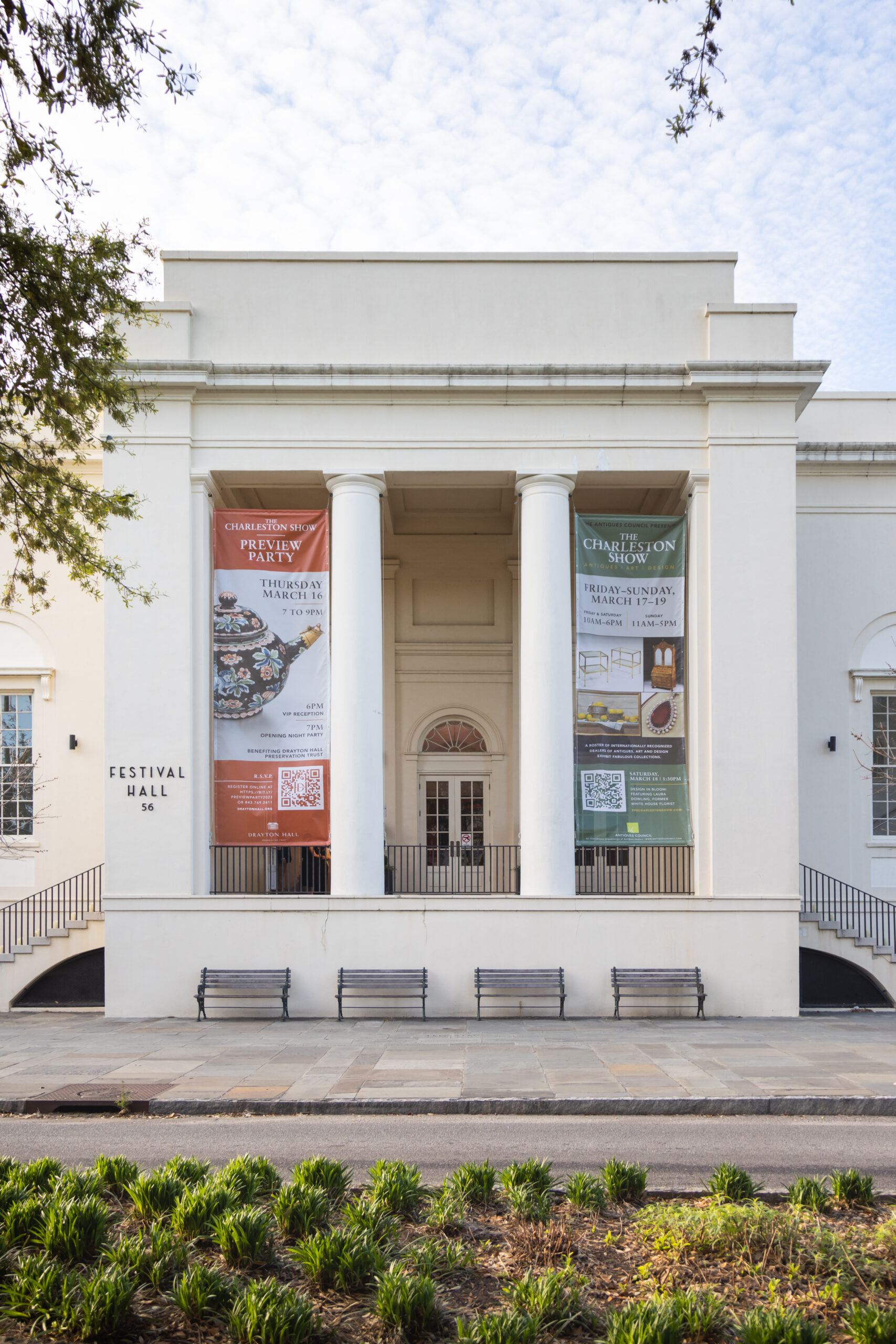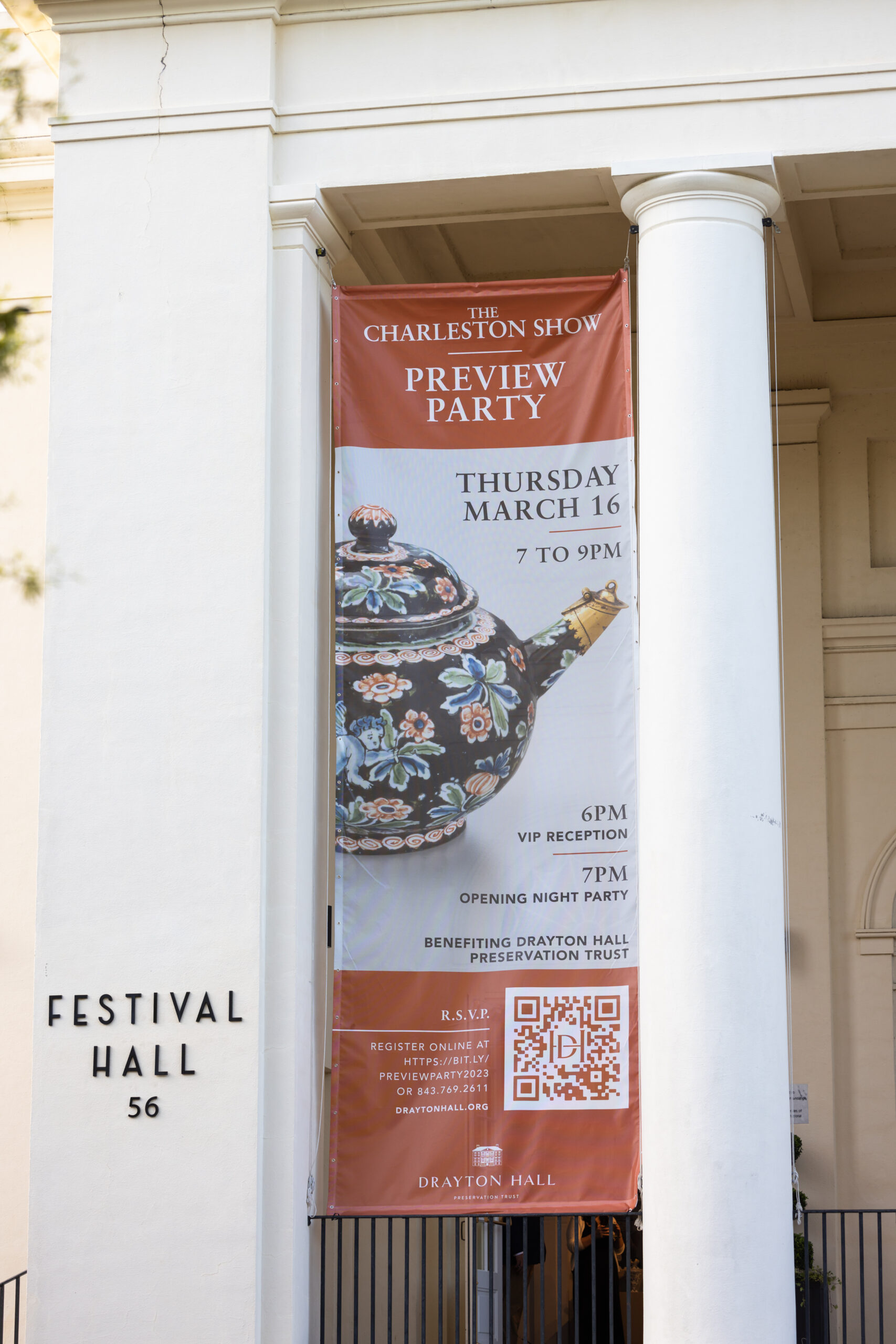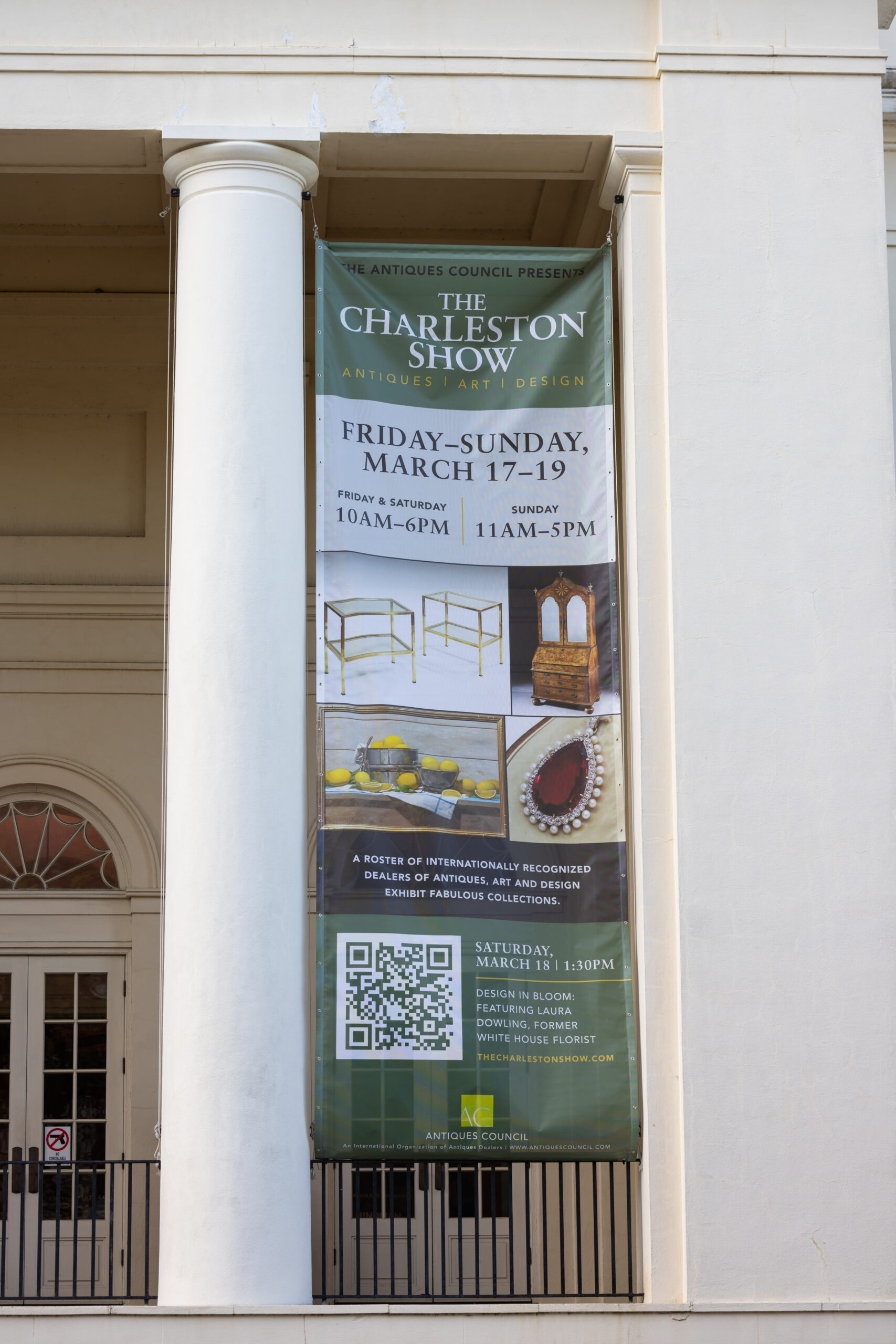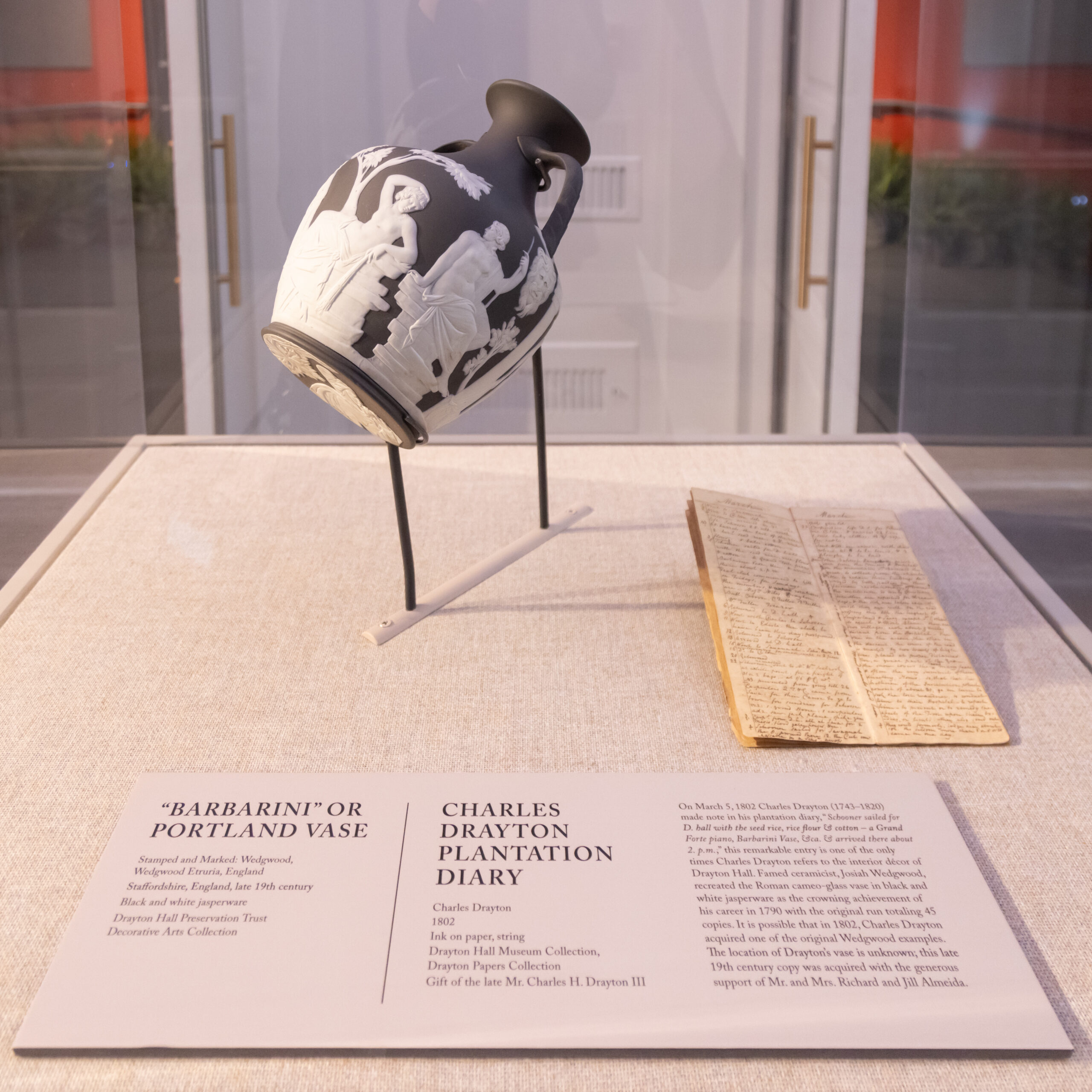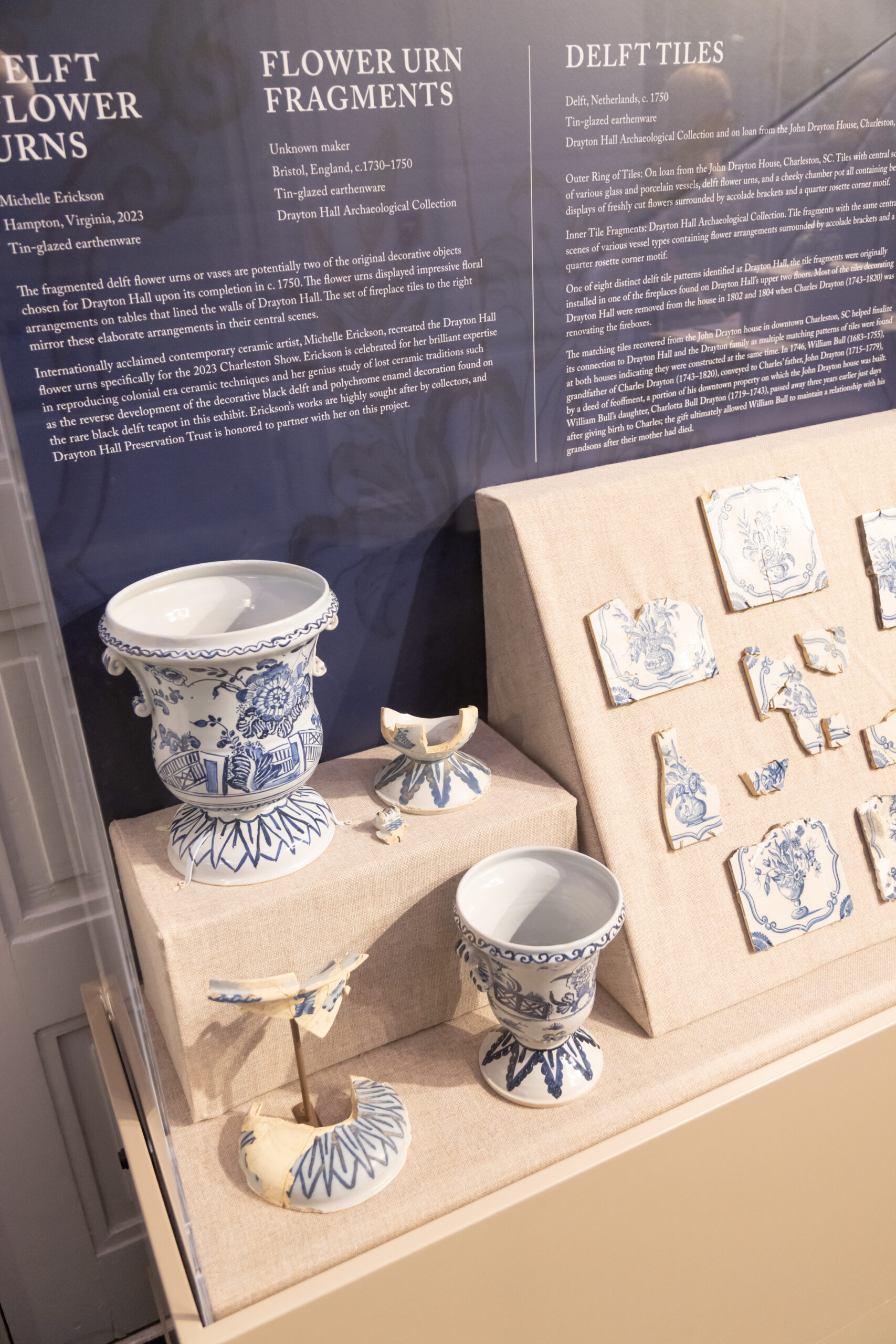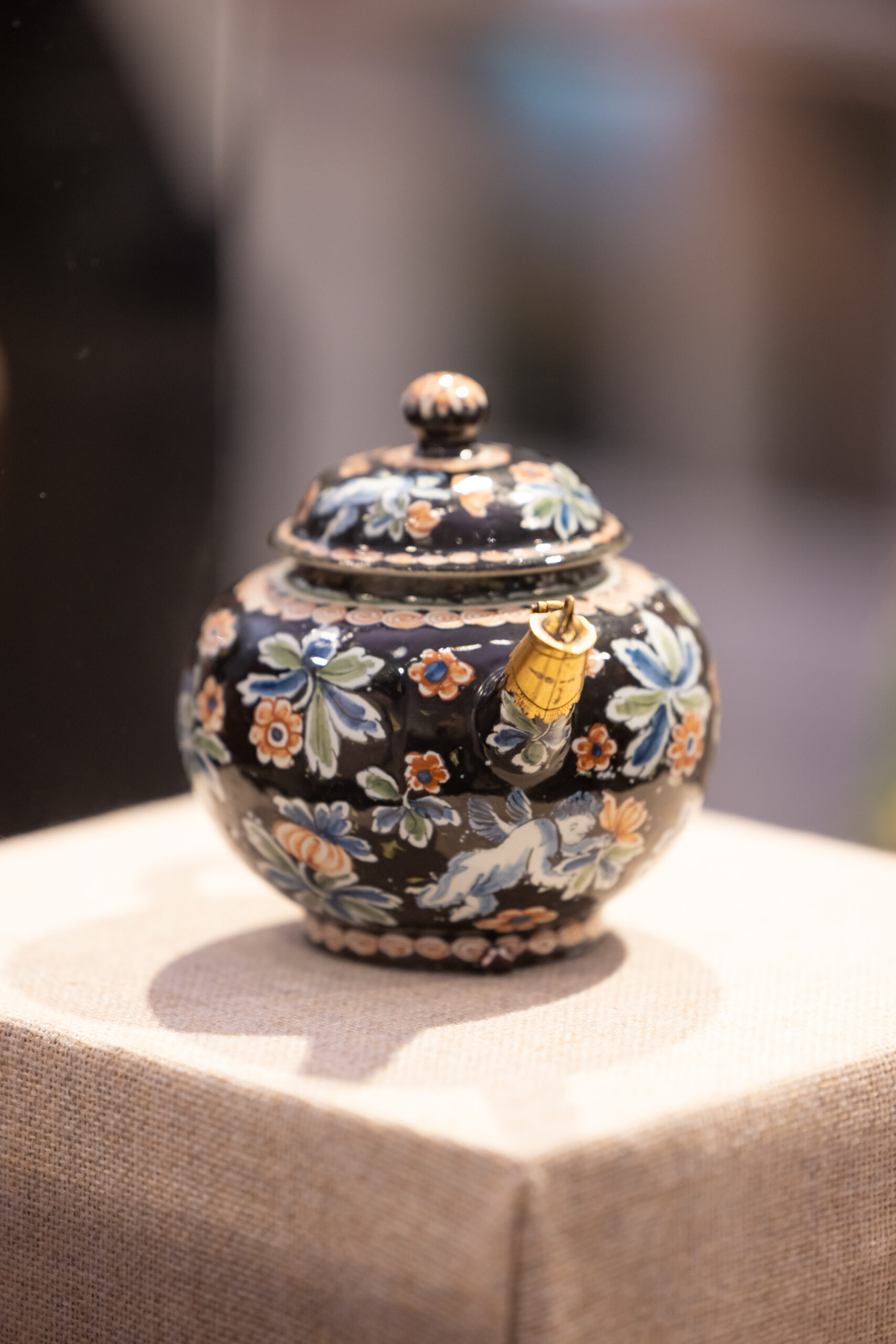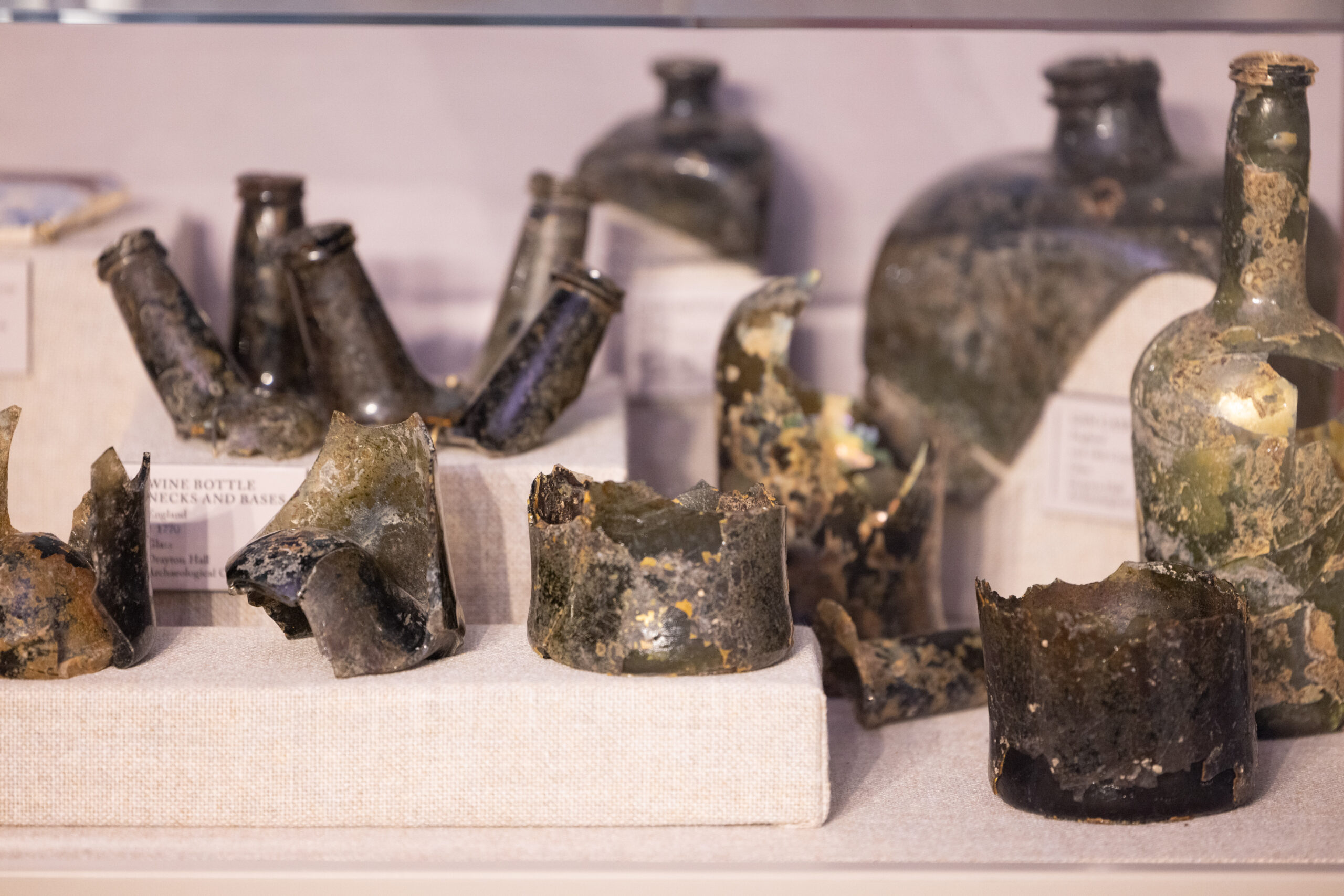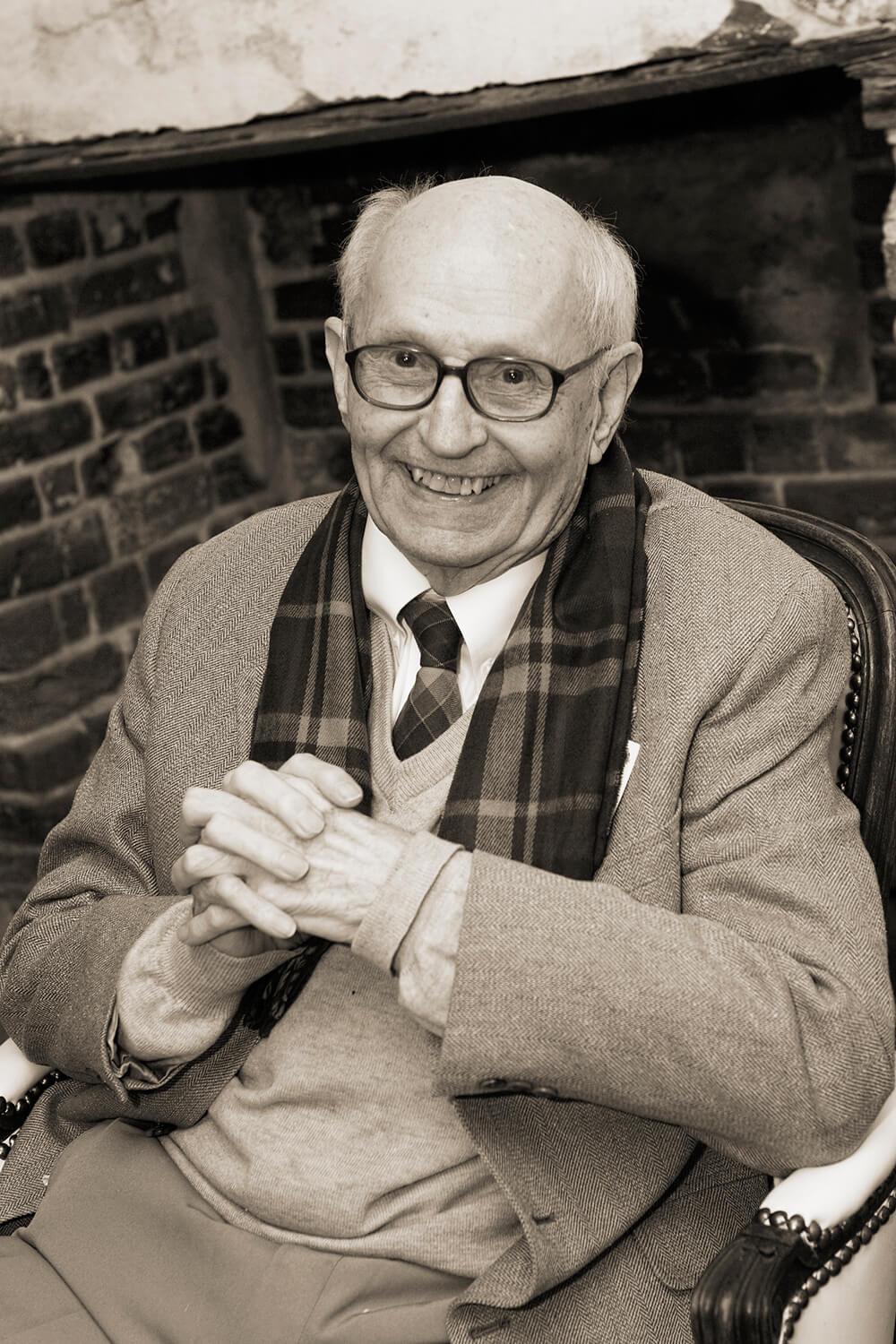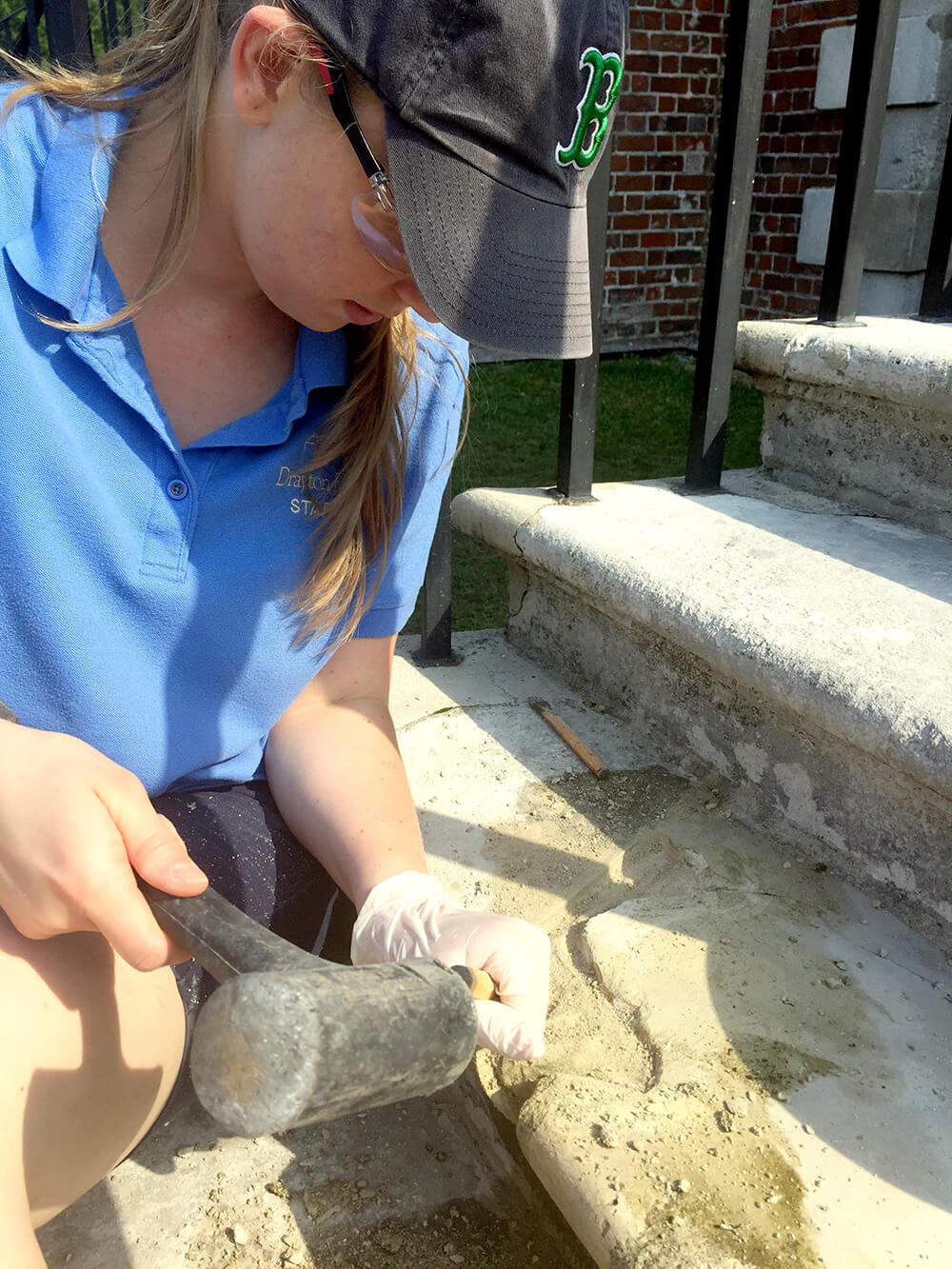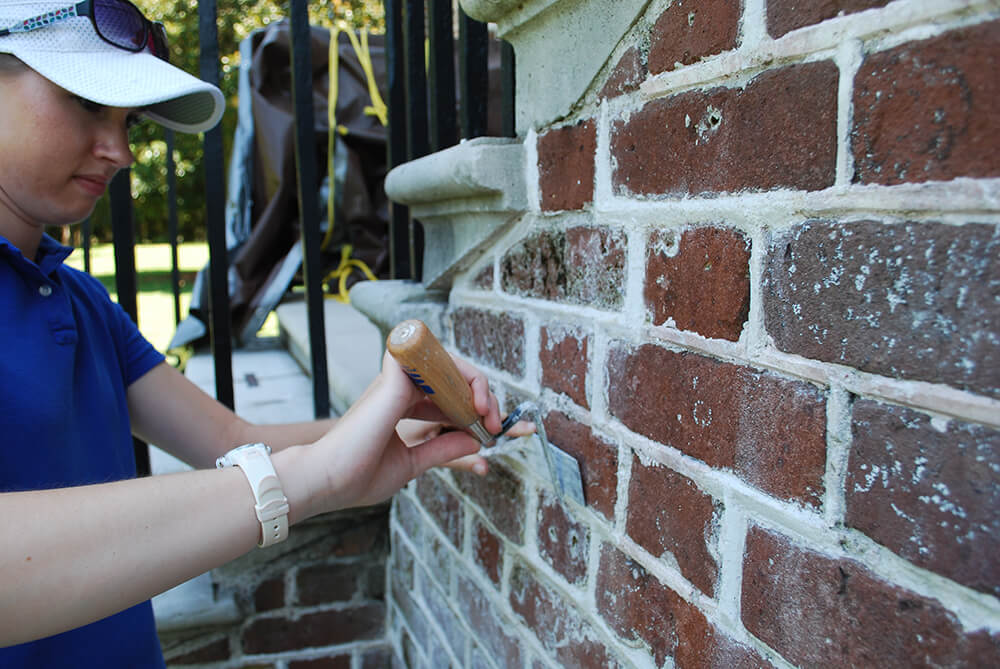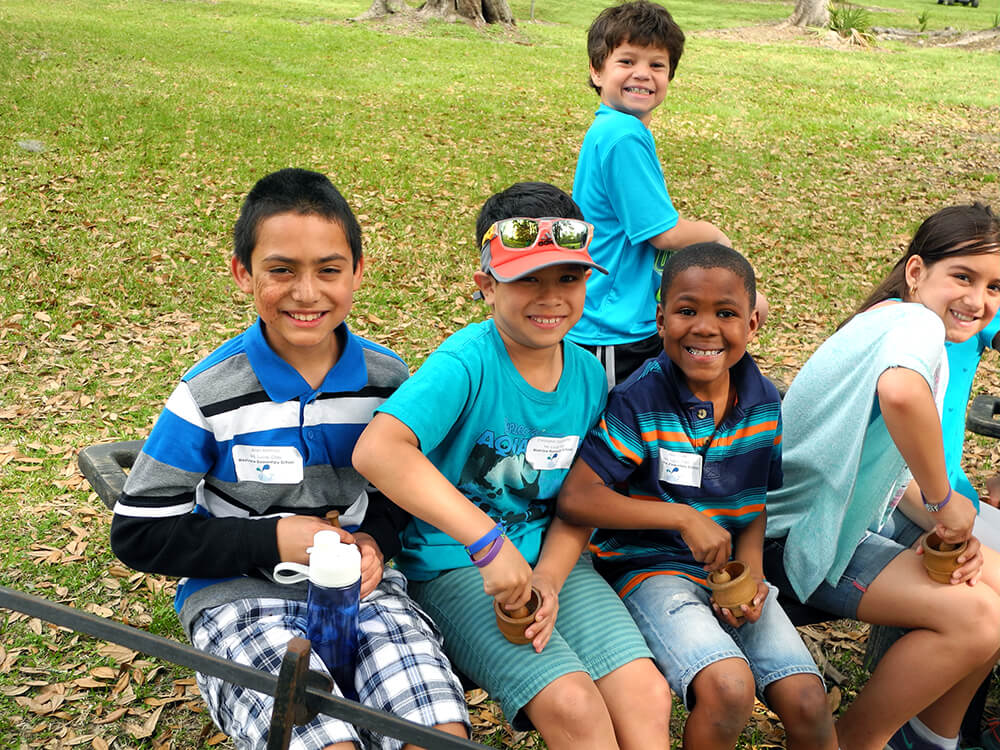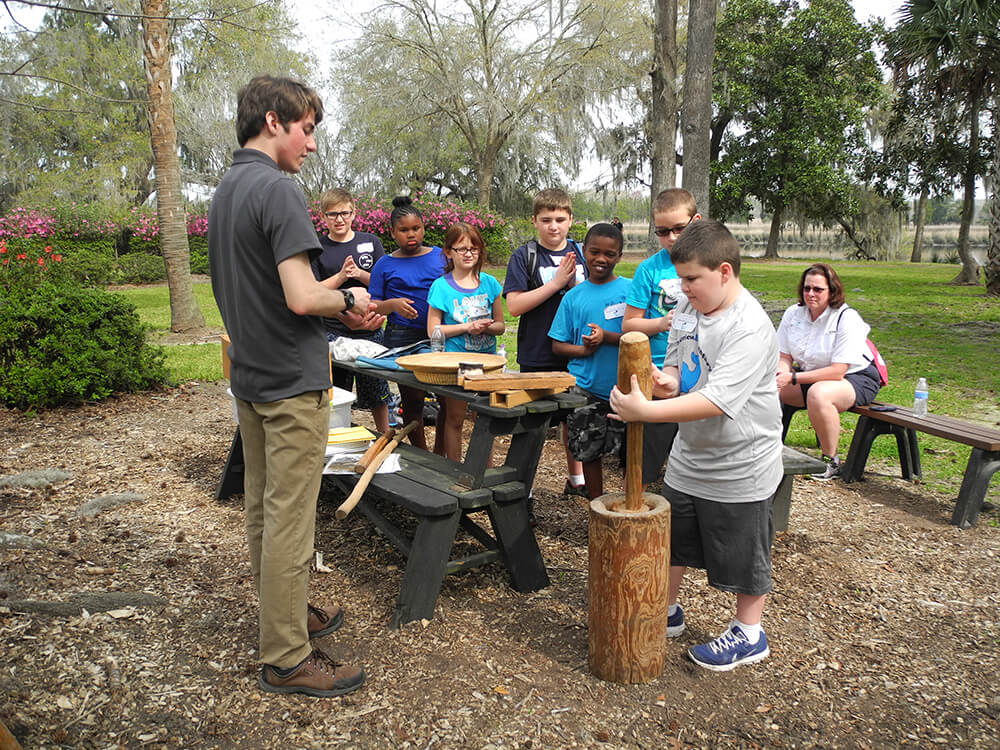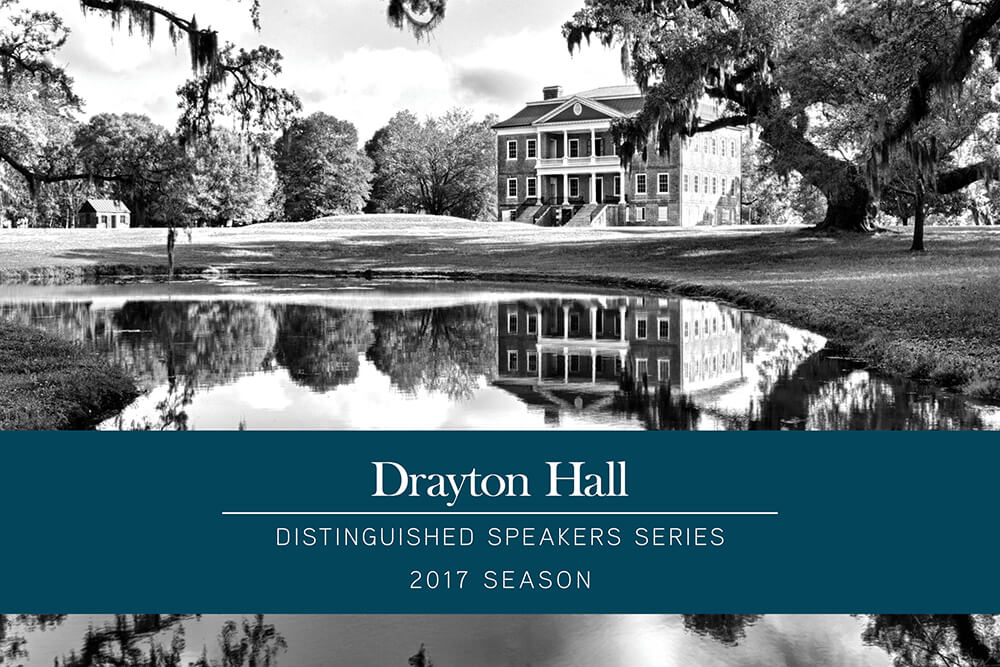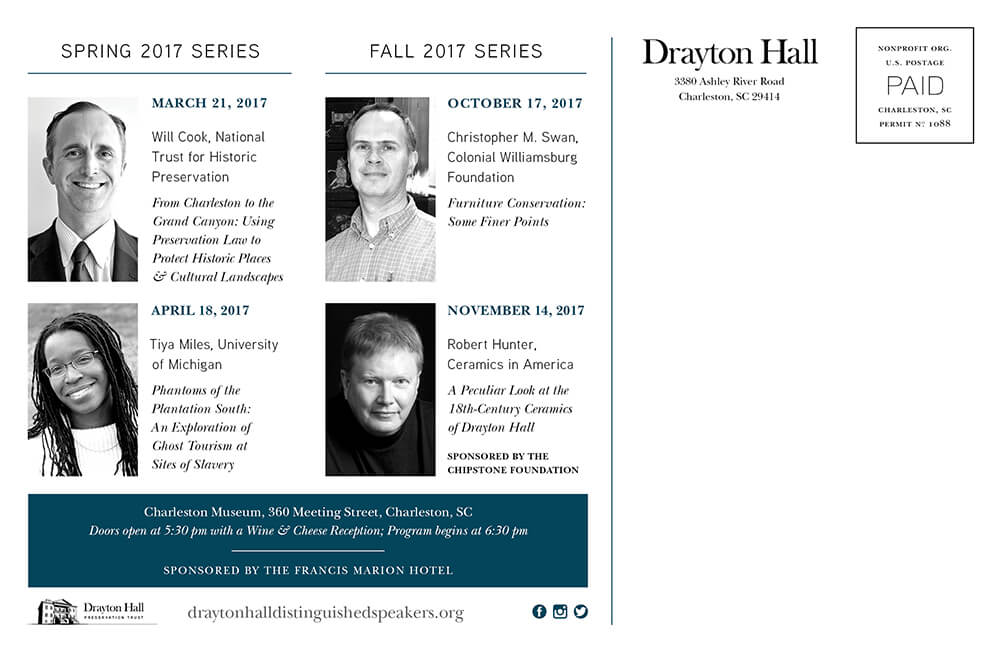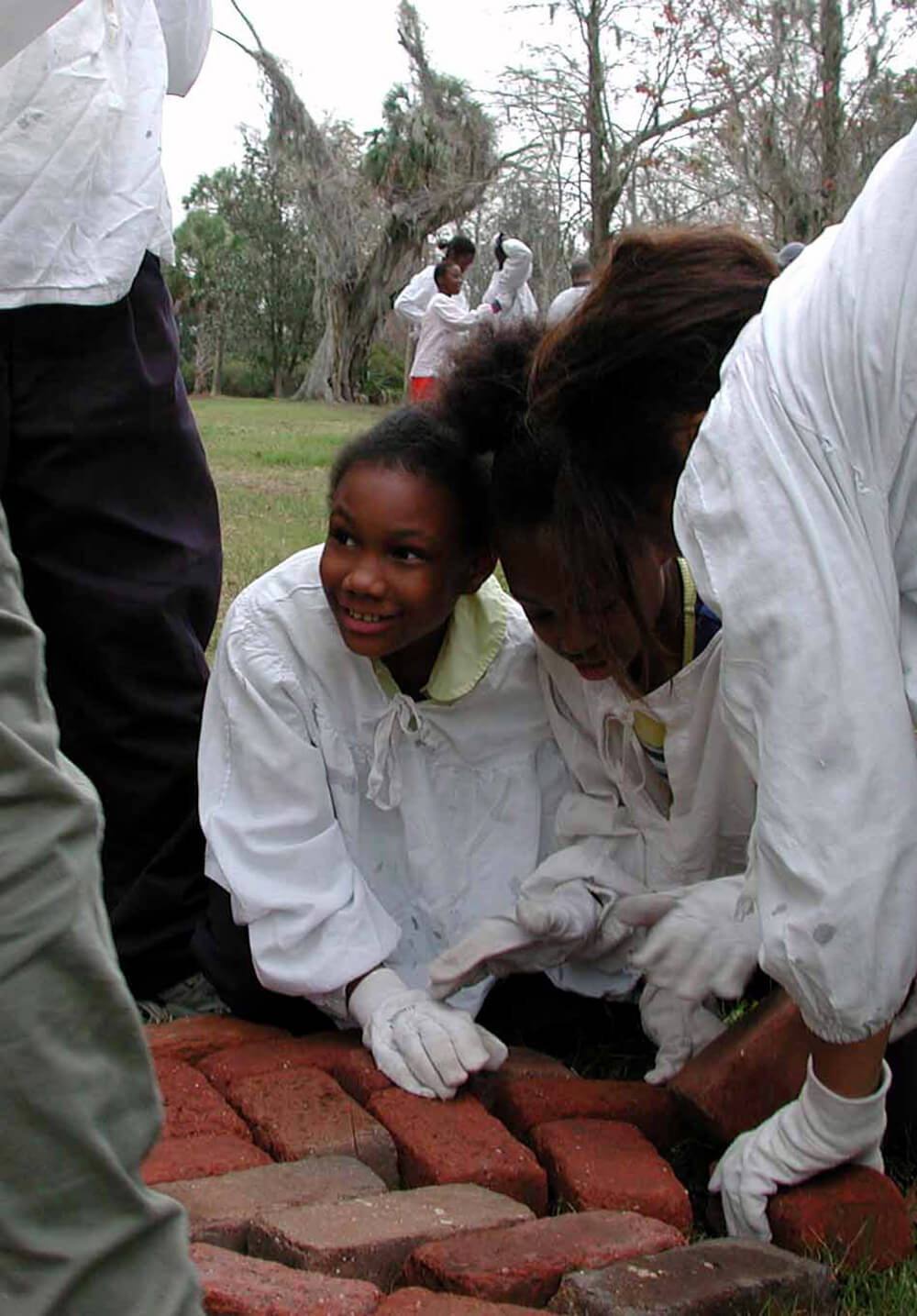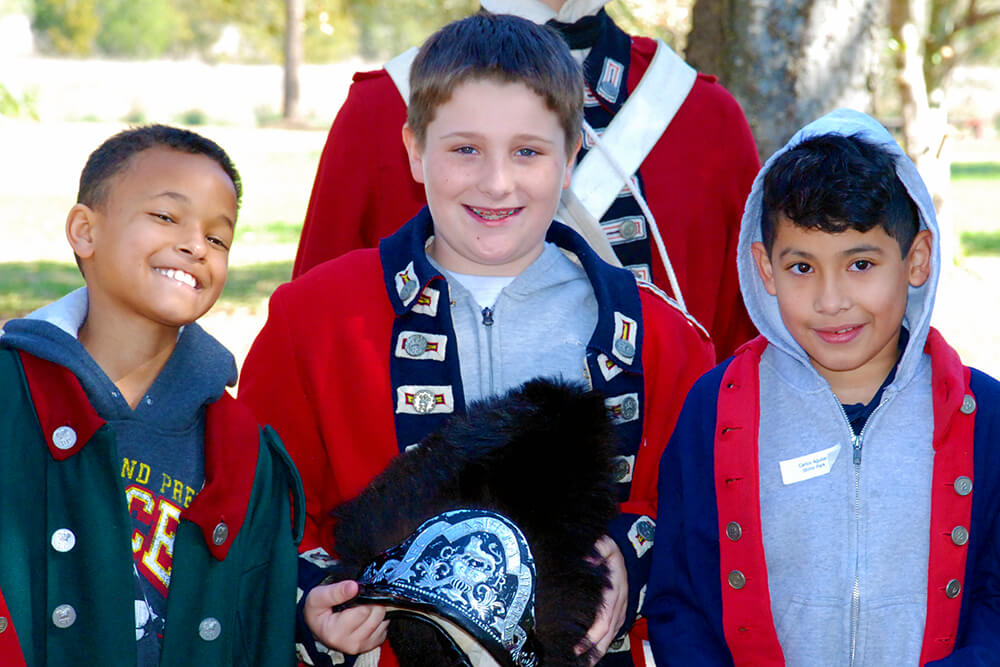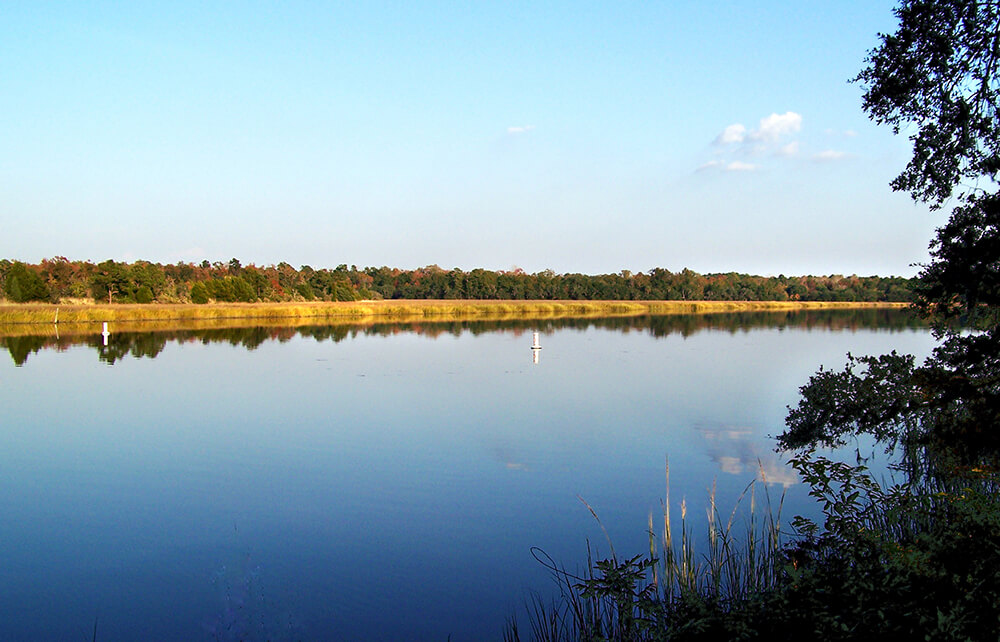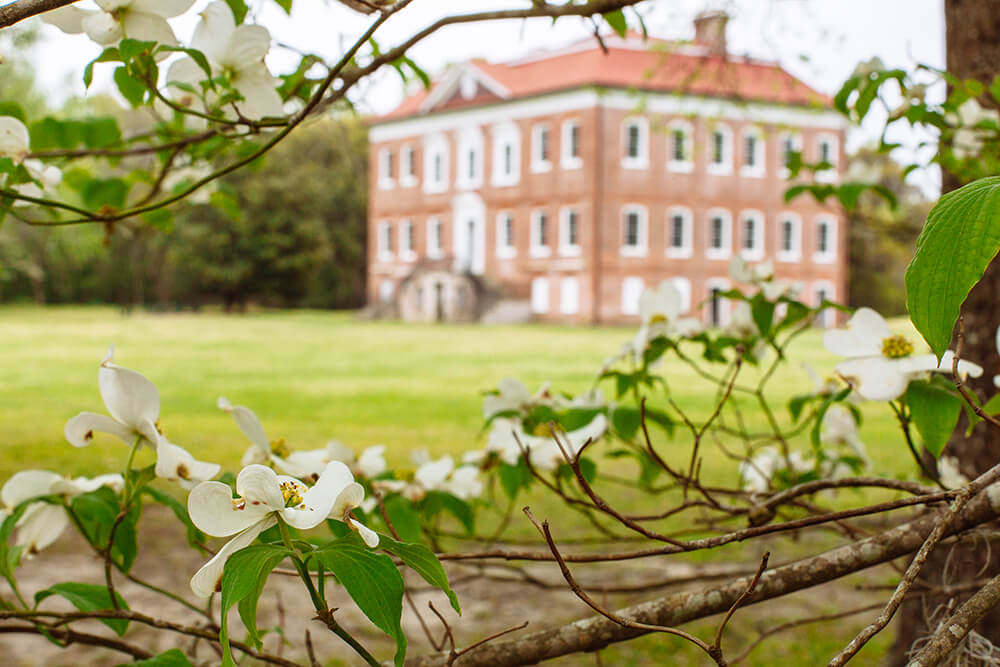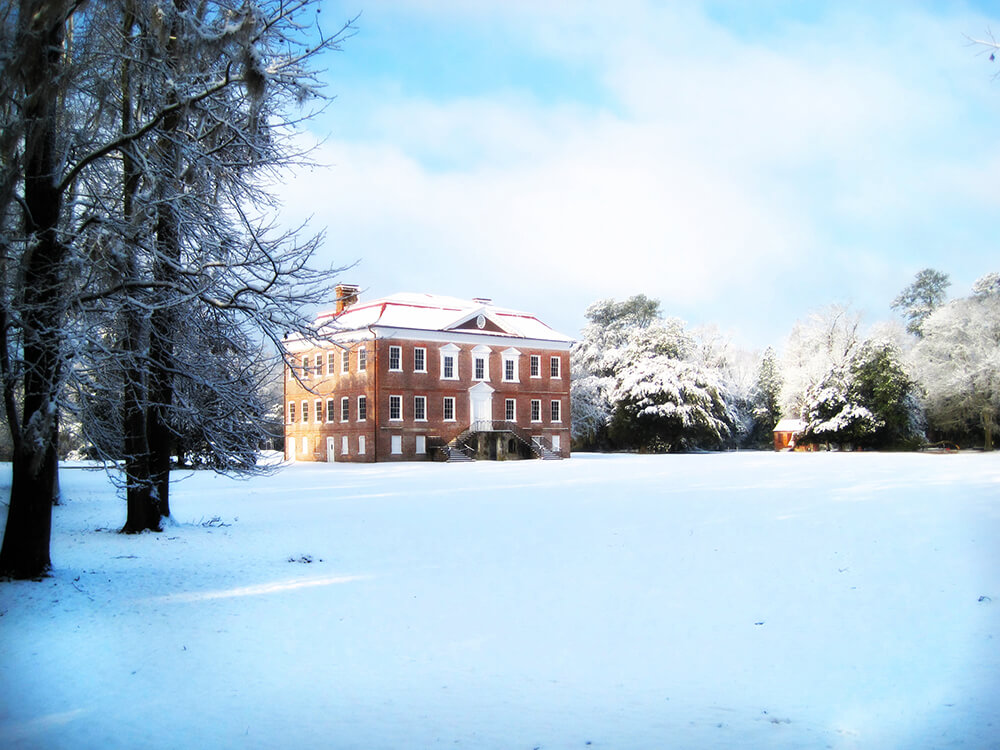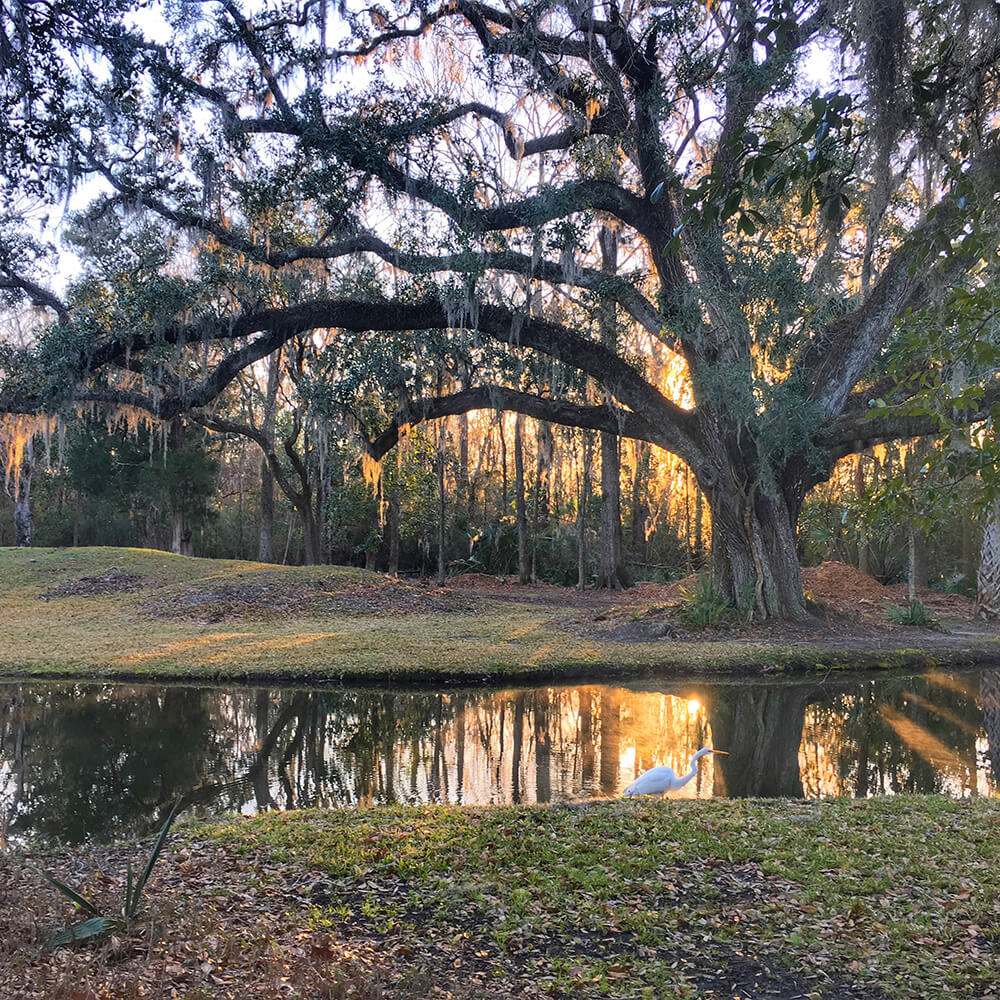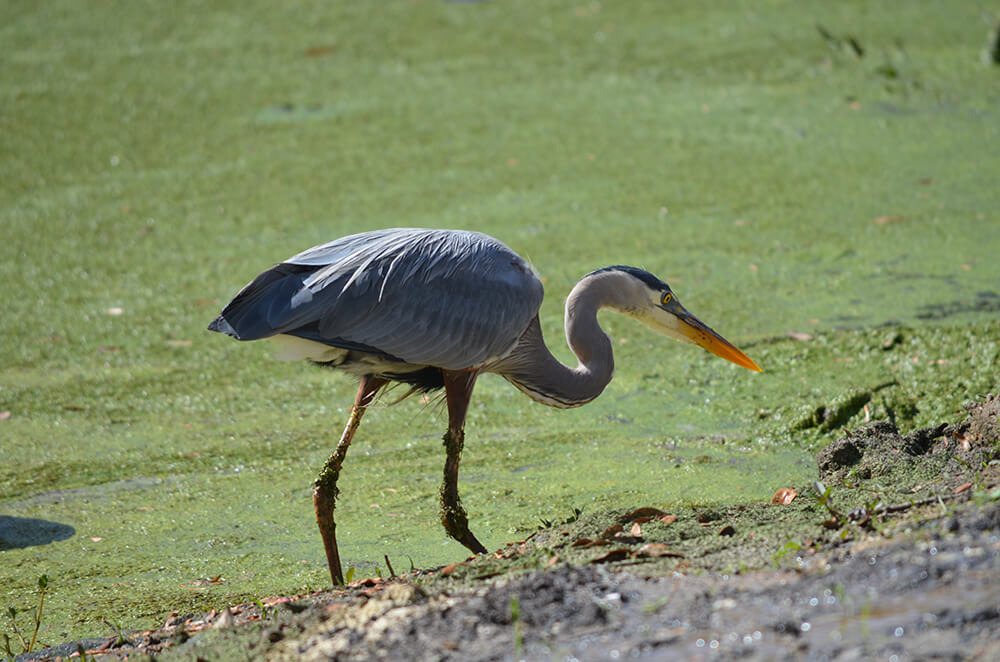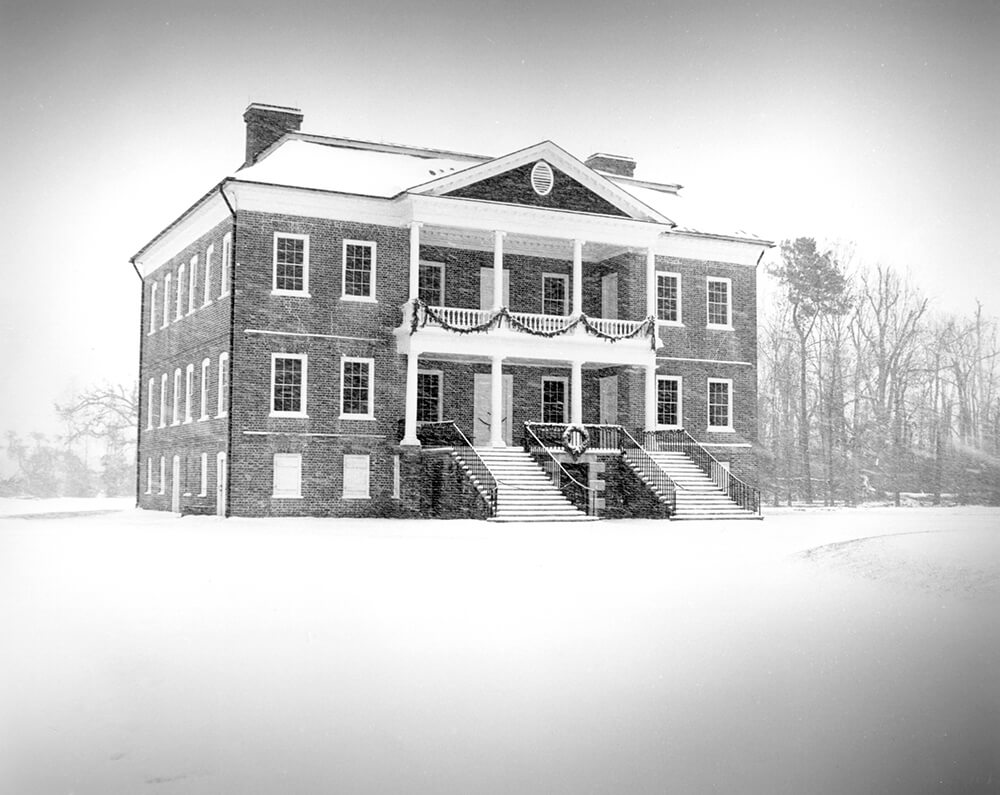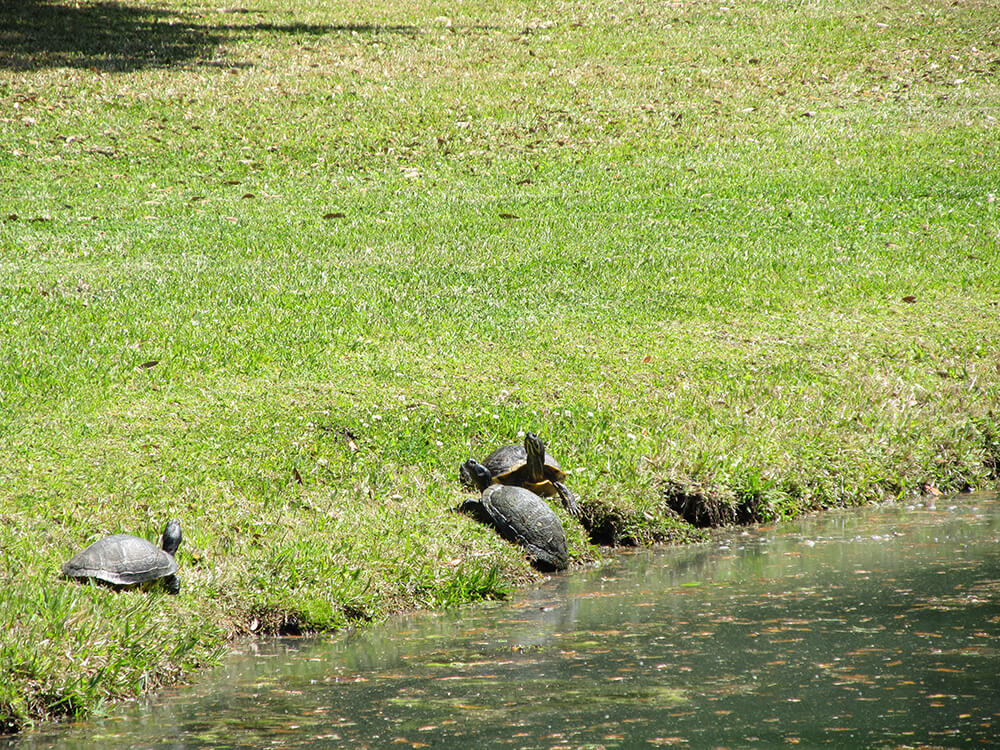
Upper Great Hall - photo by Willie Graham
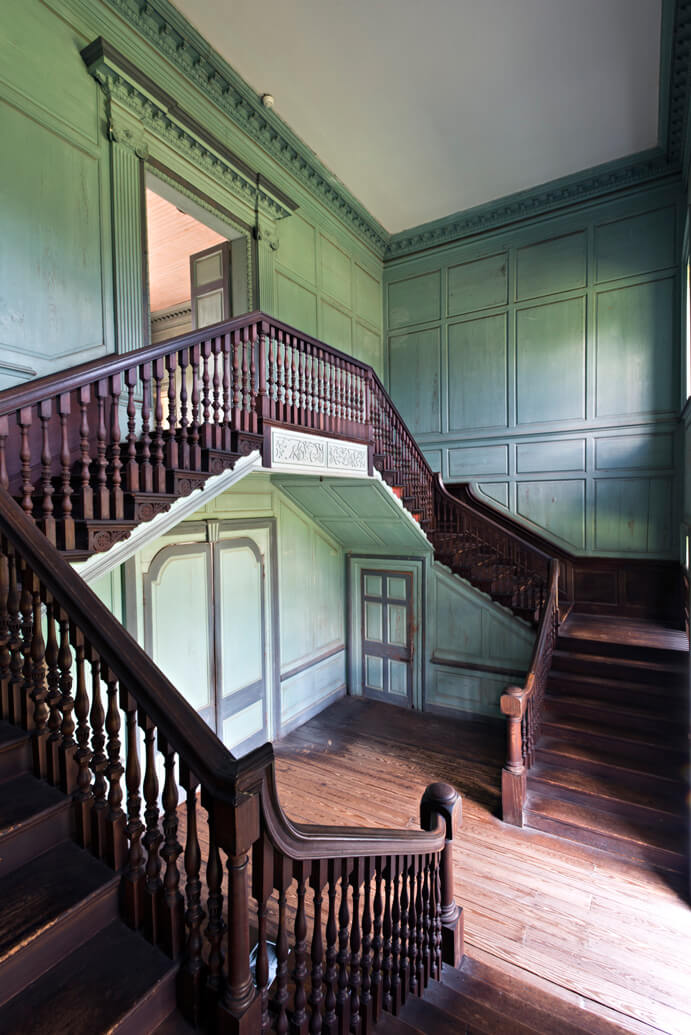
Stair Hall - photo by Willie Graham
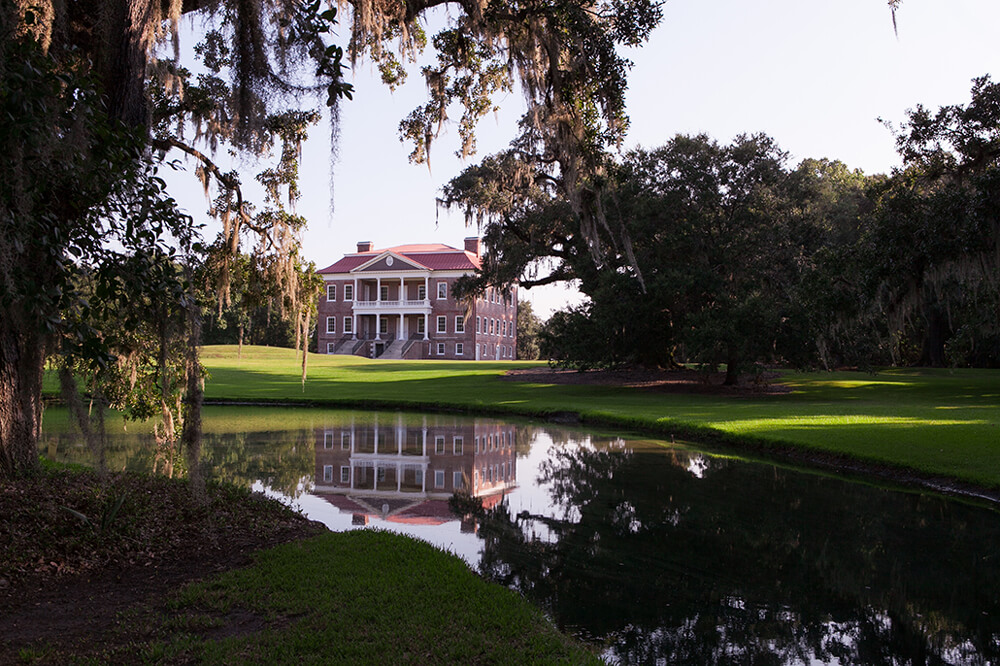
Drayton Hall across the reflecting pond - photo by Leslie McKellar
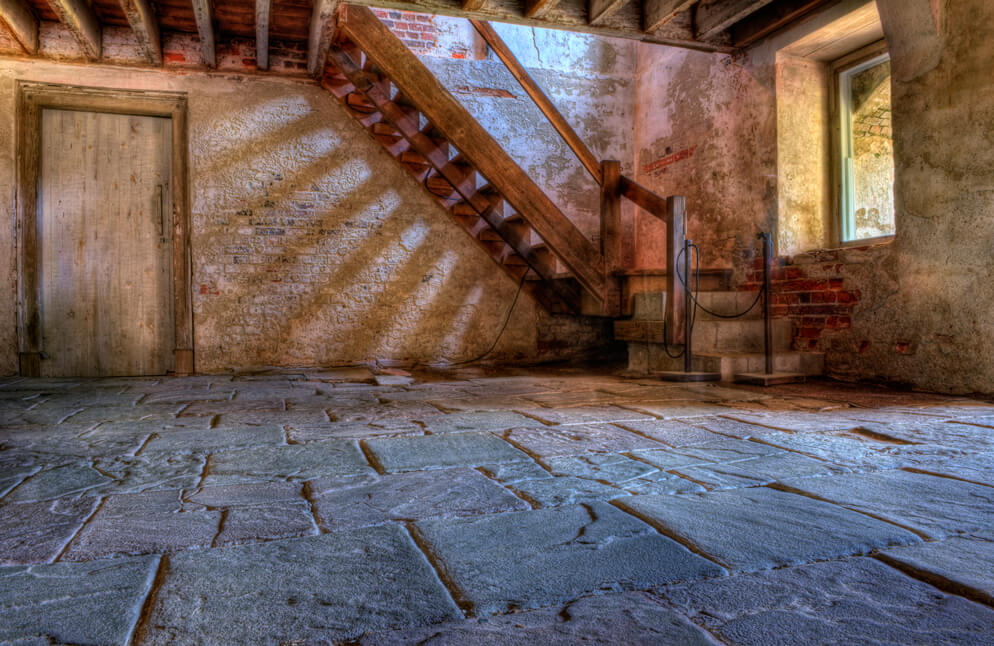
The raised English basement - photo by Tony Sweet
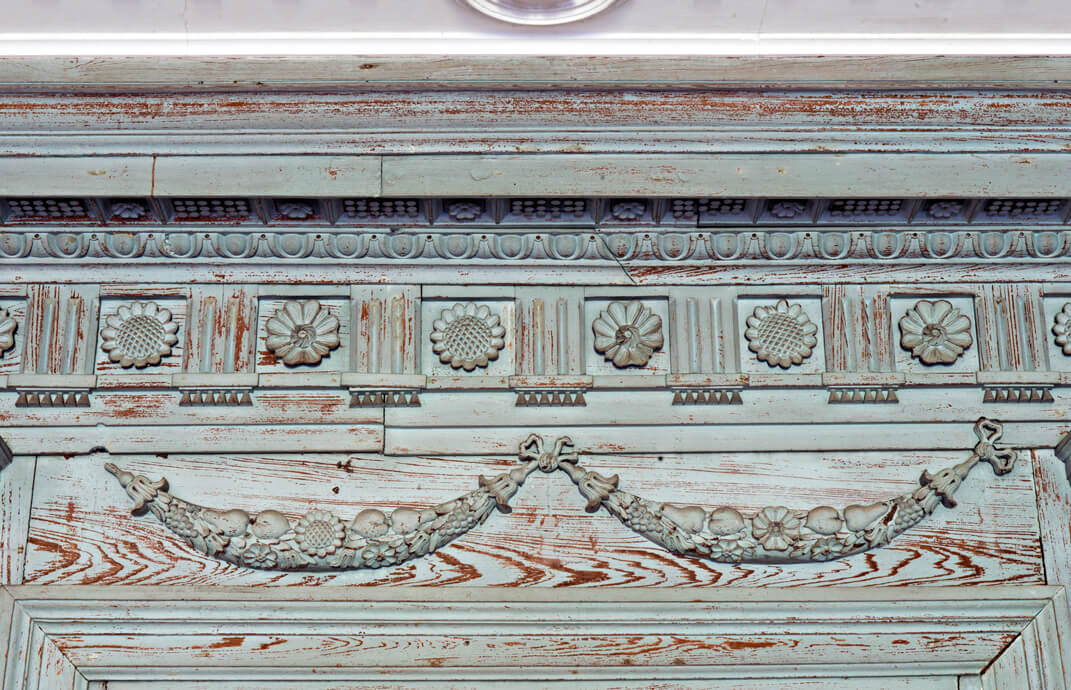
Architectural detail from the Great Hall - photo by Willie Graham
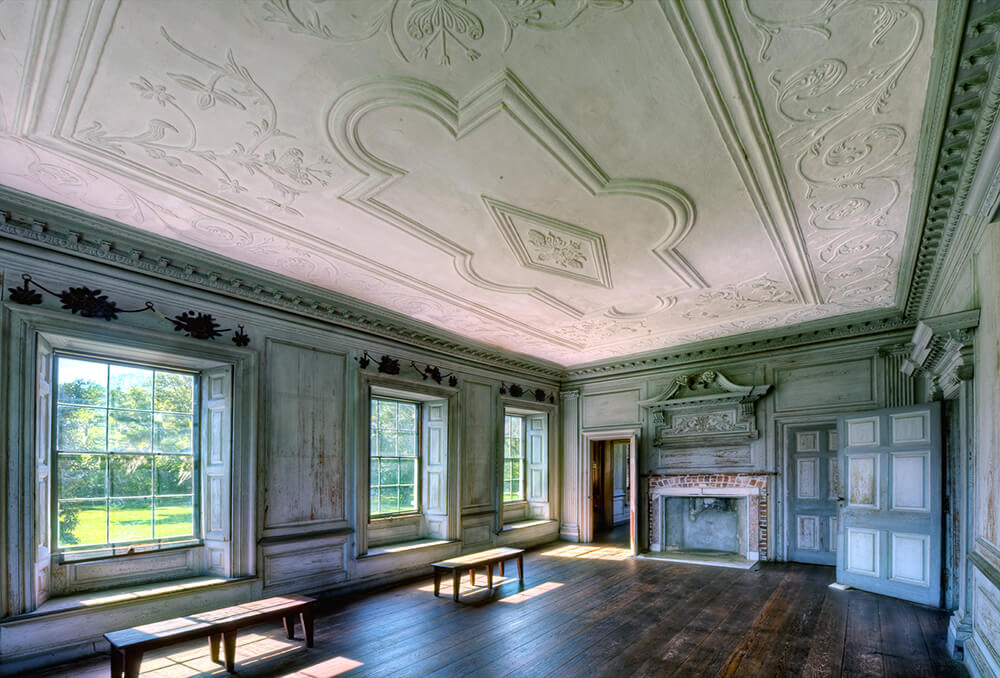
The Drawing Room - photo by Tony Sweet

Architectural detail of the overmantle in the Great Hall - photo by Willie Graham
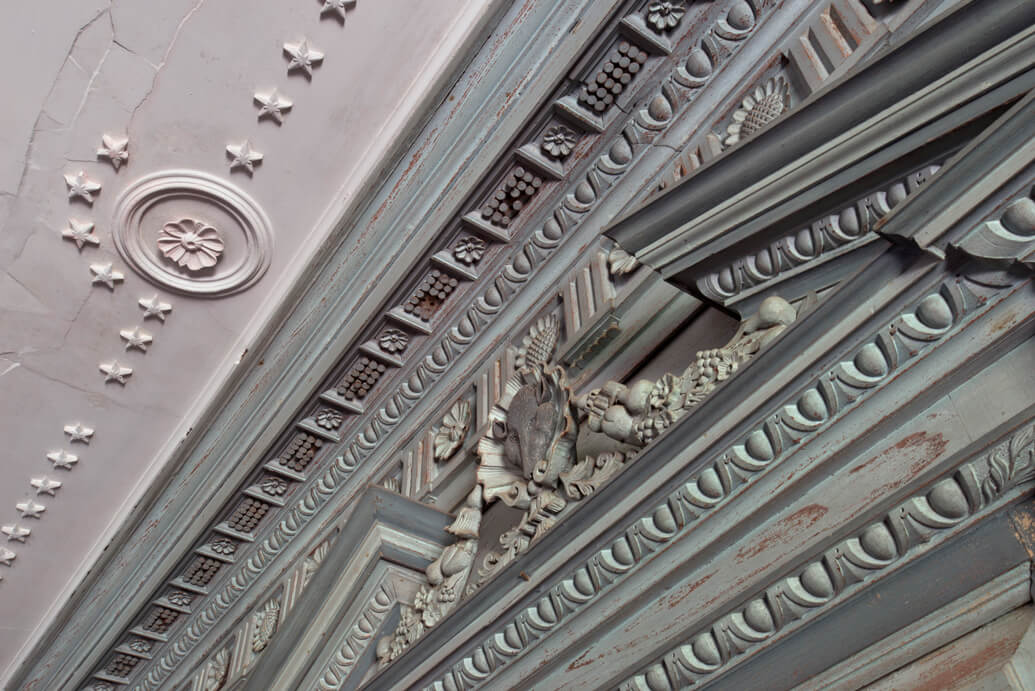
Architectural details of the elaborate overmantle, carved trim, and ceiling of the Great Hall at circa 1738 Drayton Hall. Photo by Willie Graham

The Great Hall's plaster ceiling medallion is the third ceiling to be installed in this space and the one that visitors see today. Photo by John Apsey.

Stair Brackets - Caribbean mahogany imported to South Carolina by John Drayton is carved into stair brackets used to ornament Drayton
Hall’s grand Stair Hall. Staff photo
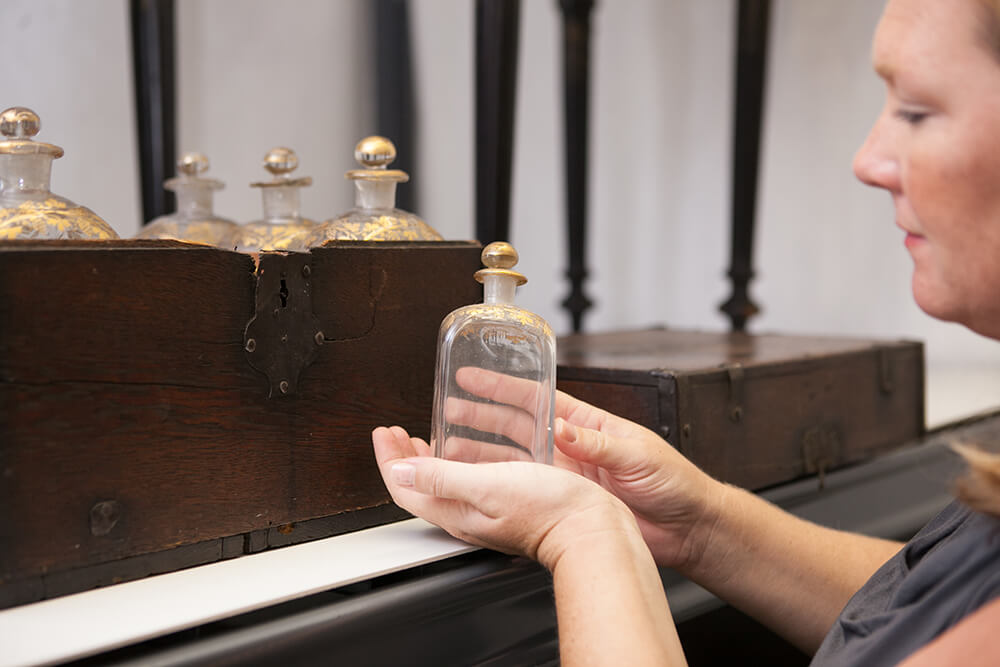
C. 1760 traveling liquor case, or Tantalus. Remarkably, all 12
gilt-trimmed bottles and their stoppers have survived in their
lockable wooden case. Gift of Mr. Charles H. Drayton Jr. and Mrs.
Julia S. Drayton. Photo by Leslie McKellar
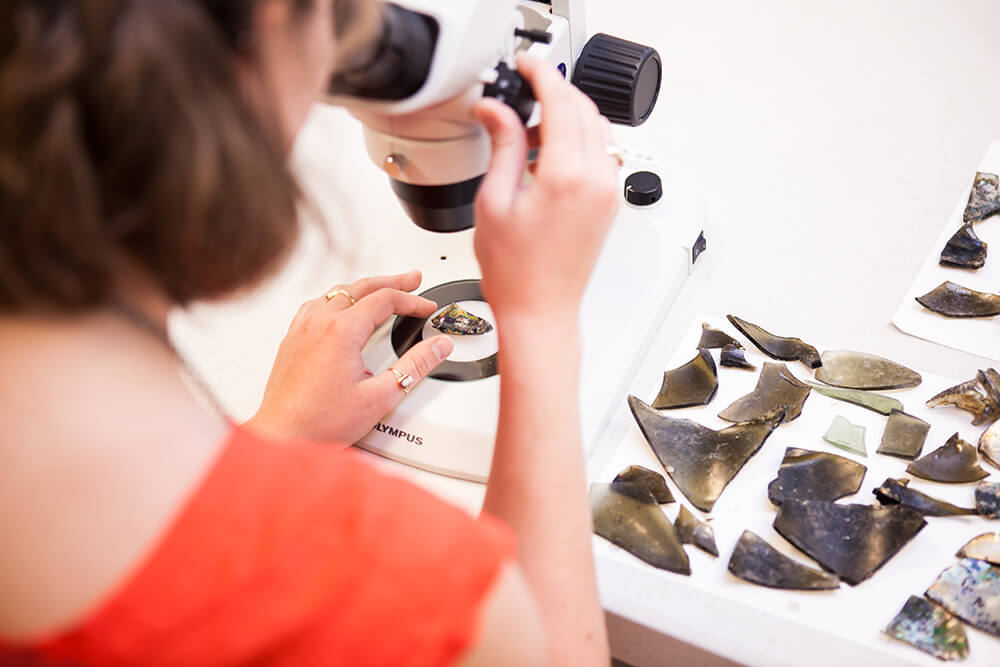
Examining artifacts under a special microscope - photo by Leslie McKellar

Artifact labeling at Drayton Hall - photo by Leslie McKellar
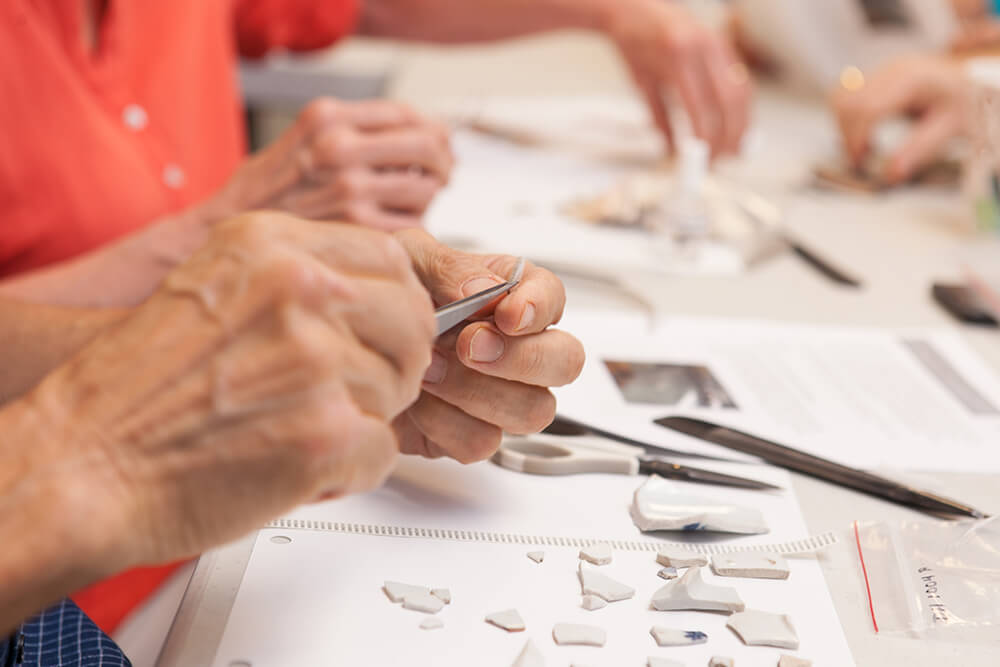
Trained preservation volunteers work on the cleaning and labeling of fragments found archaeologically at Drayton Hall. Photo by Leslie McKellar
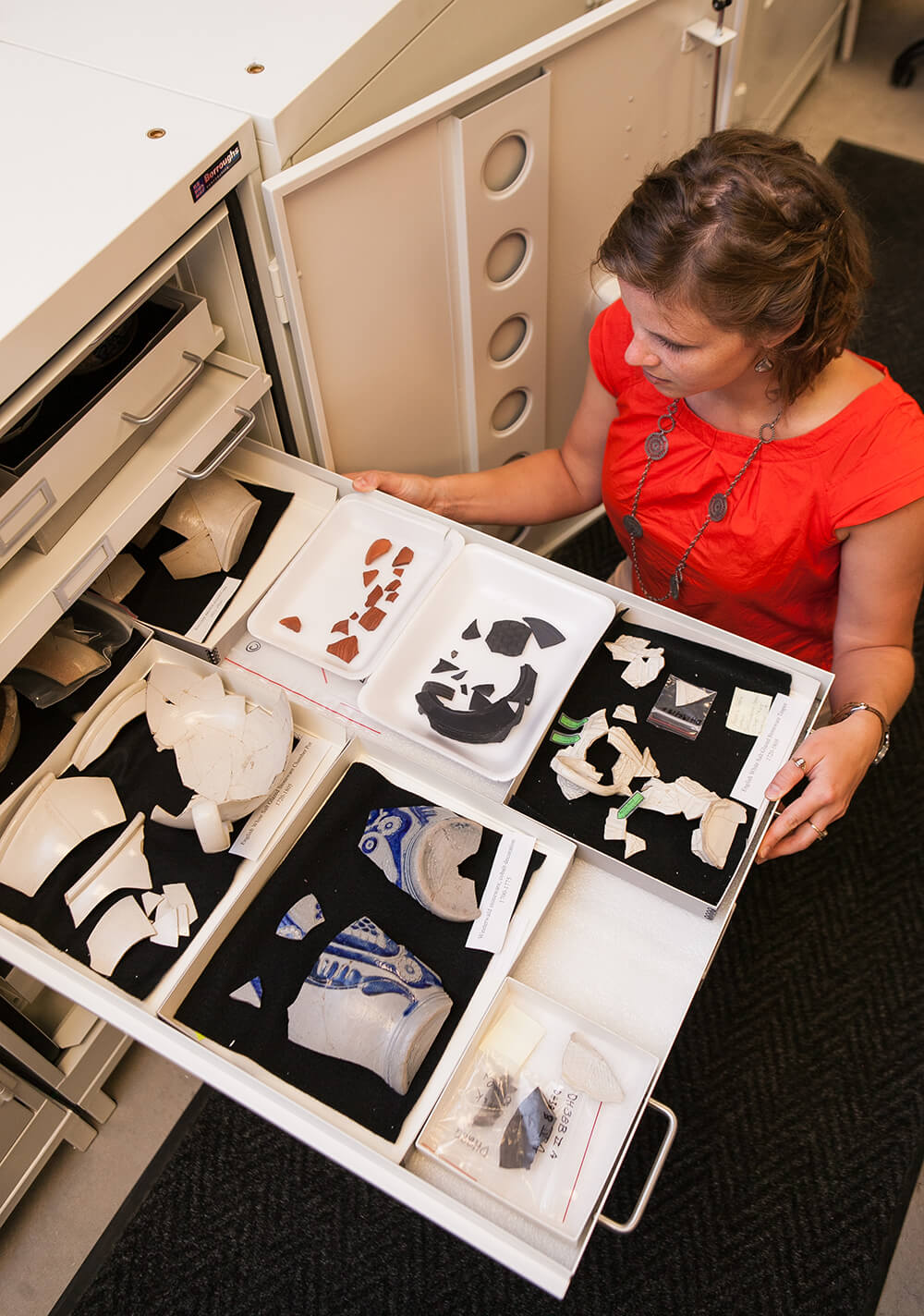
A drawer of artifacts found archaeologically at Drayton Hall, Photo by Leslie McKellar
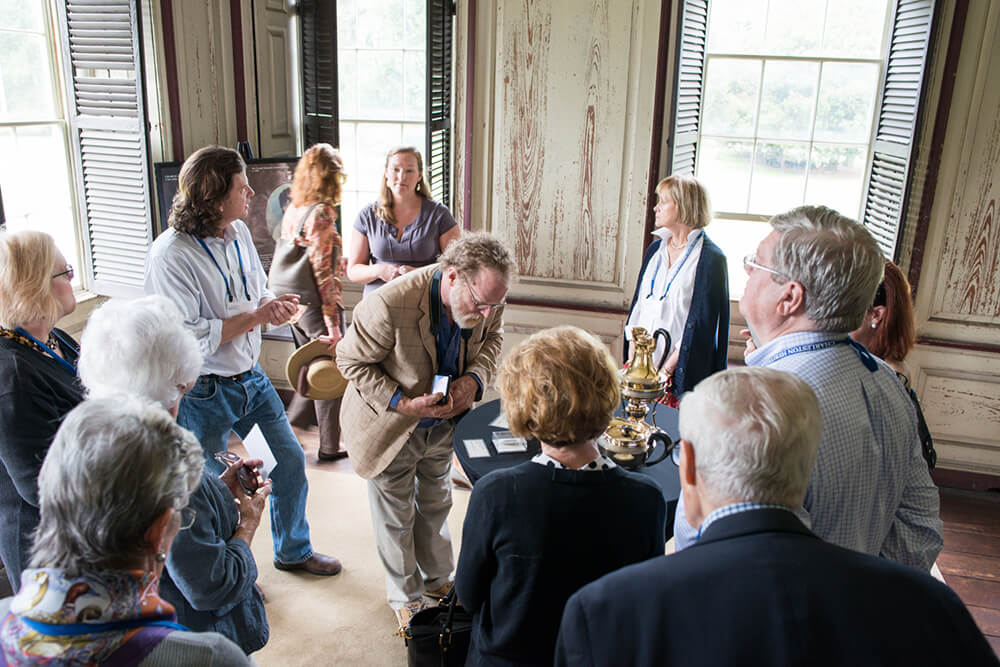
A private, behind-the-scenes tour of Drayton Hall during the annual Charleston Heritage Symposium. Photo by Focal Fox Photography
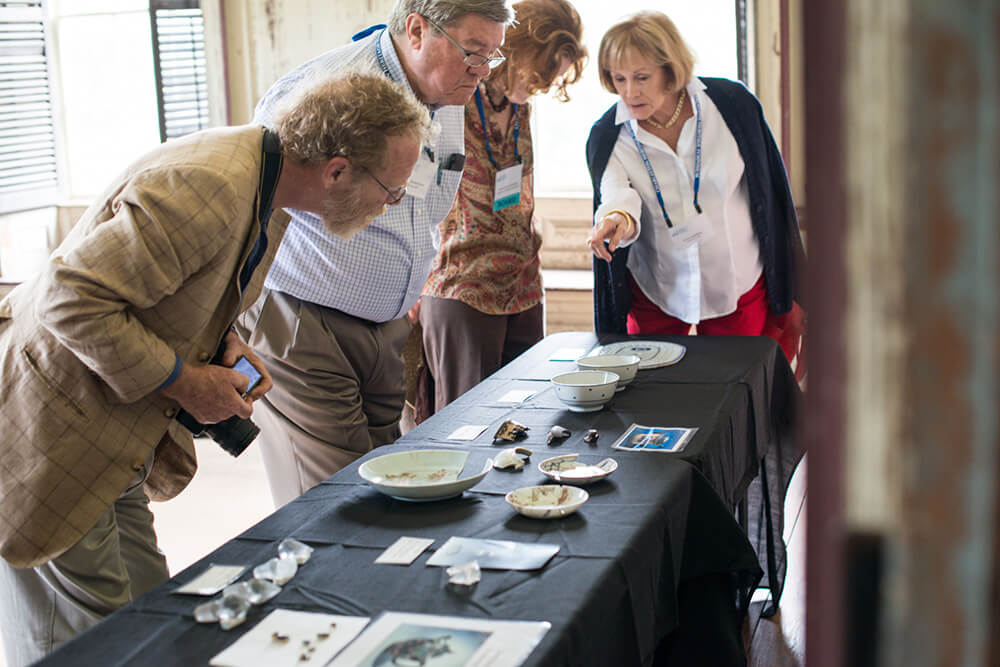
A private, behind-the-scenes tour of Drayton Hall during the annual Charleston Heritage Symposium. Photo by Focal Fox Photography

Ann Caldwell and the a capella vocal ensemble The Magnolia Singers perform African-American spiritual music in the atmospheric raised English basement -- a rare opportunity to experience music that could have been heard centuries ago in the surrounding fields and praise houses. Photo by Robbin Knight

Revelers gather at "Midnight Masquerade" to celebrate the coming celebration of All Hallow's Eve. Photo by Catherine Anne Photography
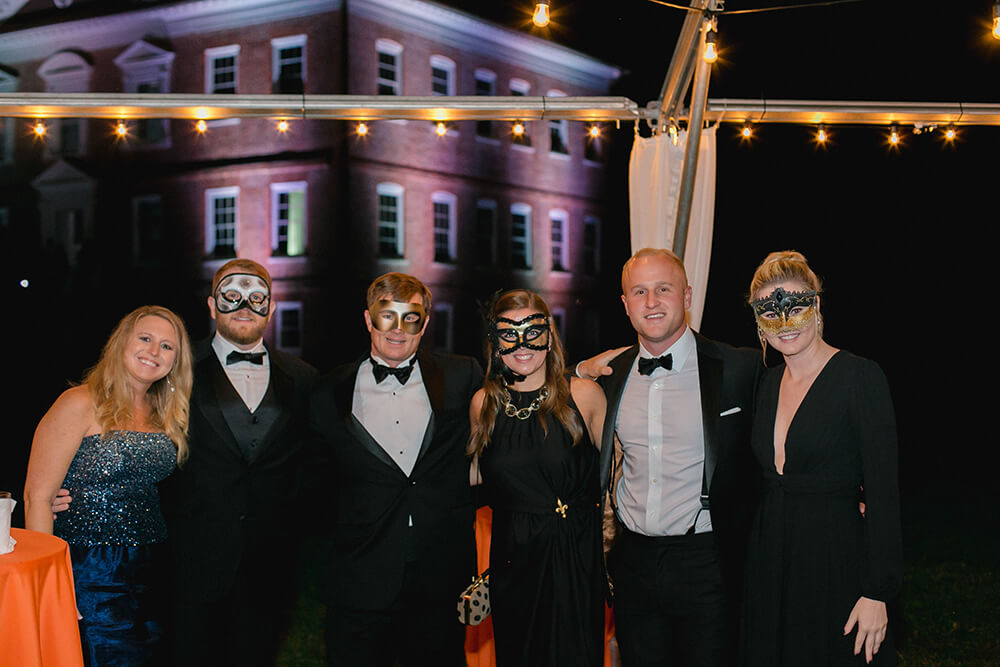
Midnight Masquerade at Drayton Hall - photo by Catherine Anne Photography
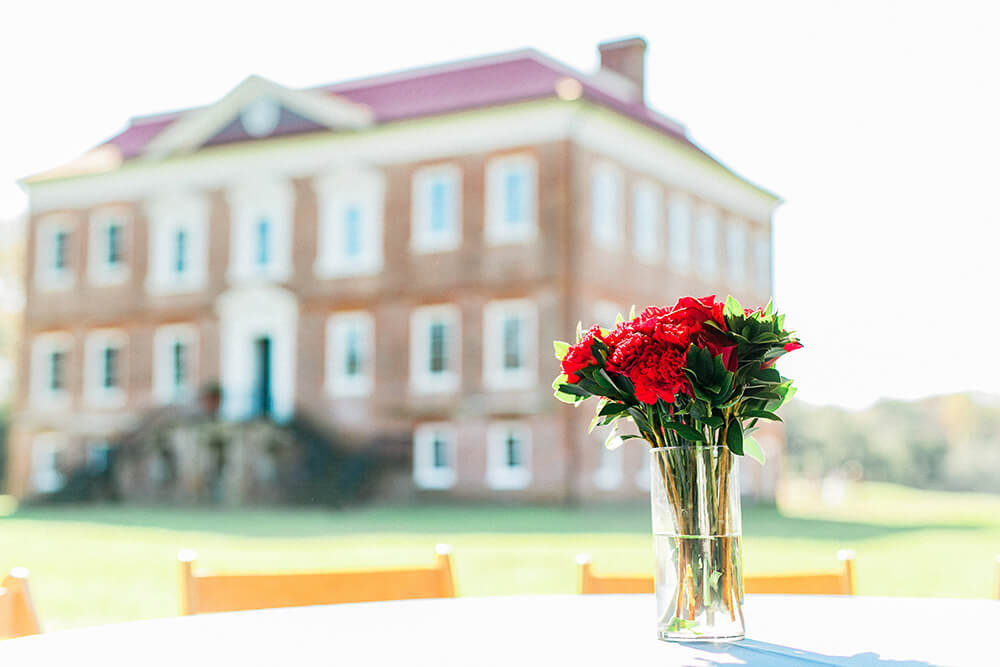
Setting the scene for a private luncheon at Drayton Hall - photo by Catherine Anne Photography
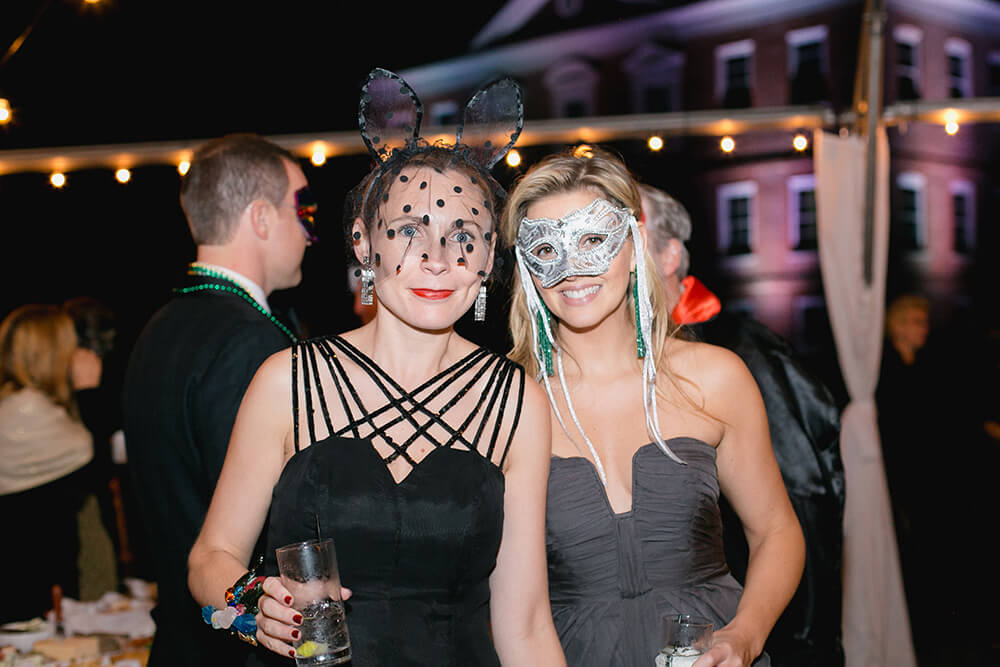
Midnight Masquerade at Drayton Hall - photo by Catherine Anne Photography

Ancient live oaks border the reflecting pond at Drayton Hall. Photo by Robbin Knight
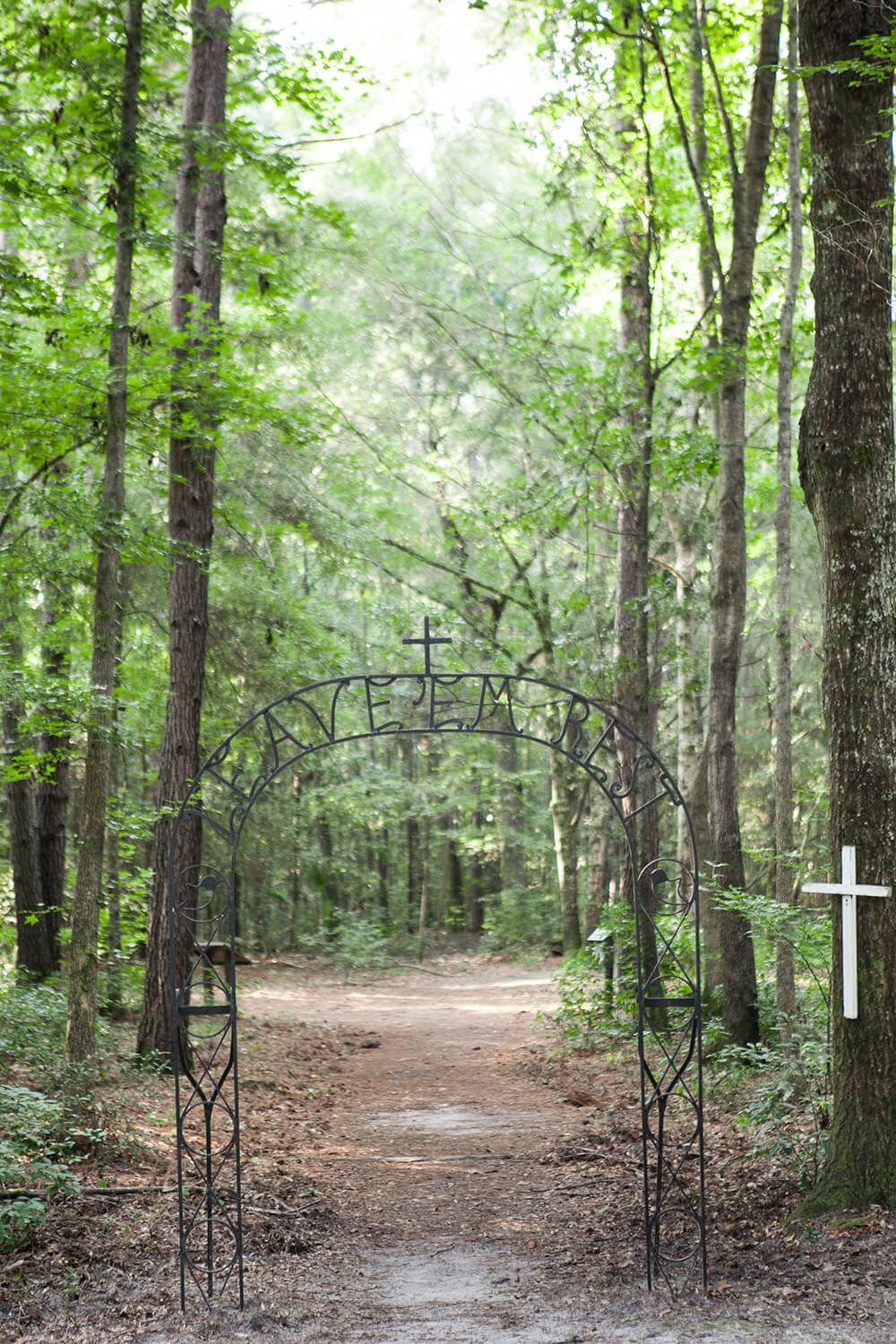
A memorial arch guides visitors through the entrance to the 18th-century African America cemetery, the oldest documented African American cemetery in the nation still in use. Photo by Leslie McKellar
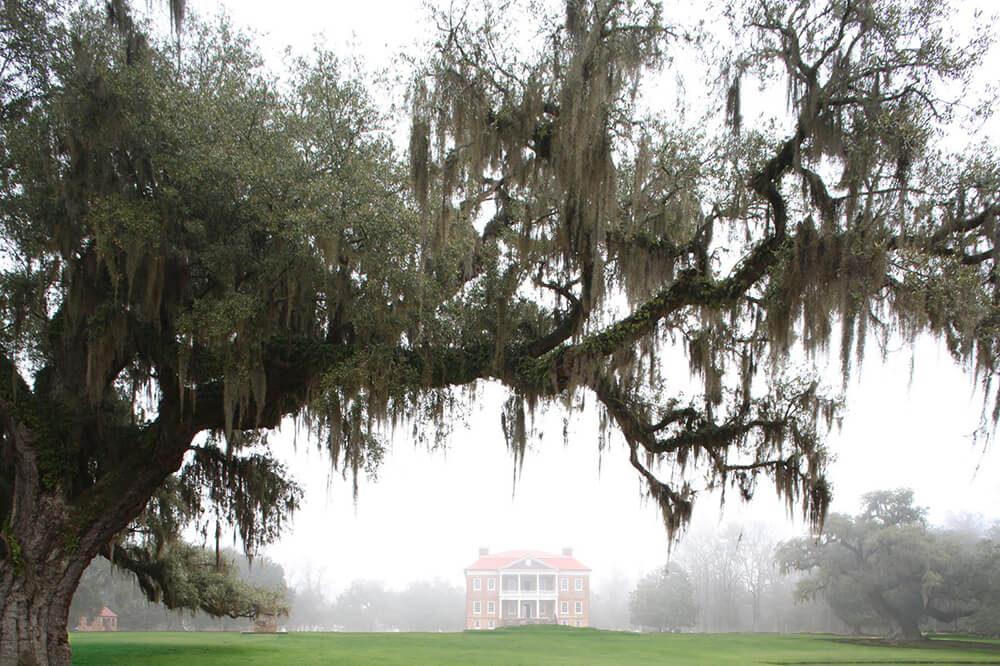
An "ah-ha" moment as visitors arrive on site - here, the early morning mist and a graceful branch of a live oak frame the view.
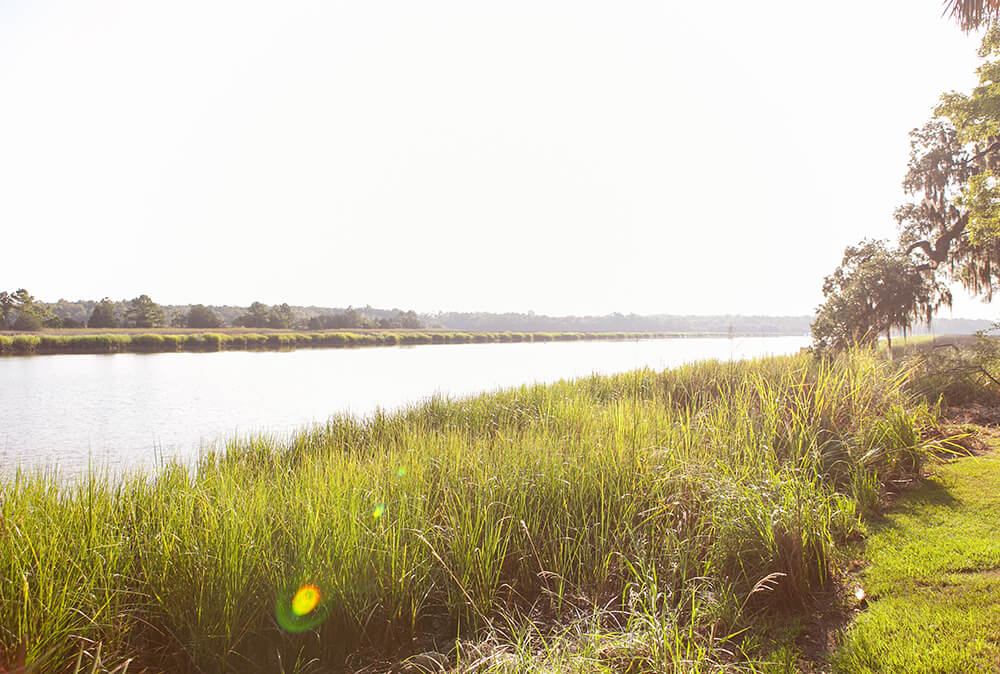
The Ashley River flows past Drayton Hall and provides a leisurely river walk for nature lovers. Photo by Leslie McKellar
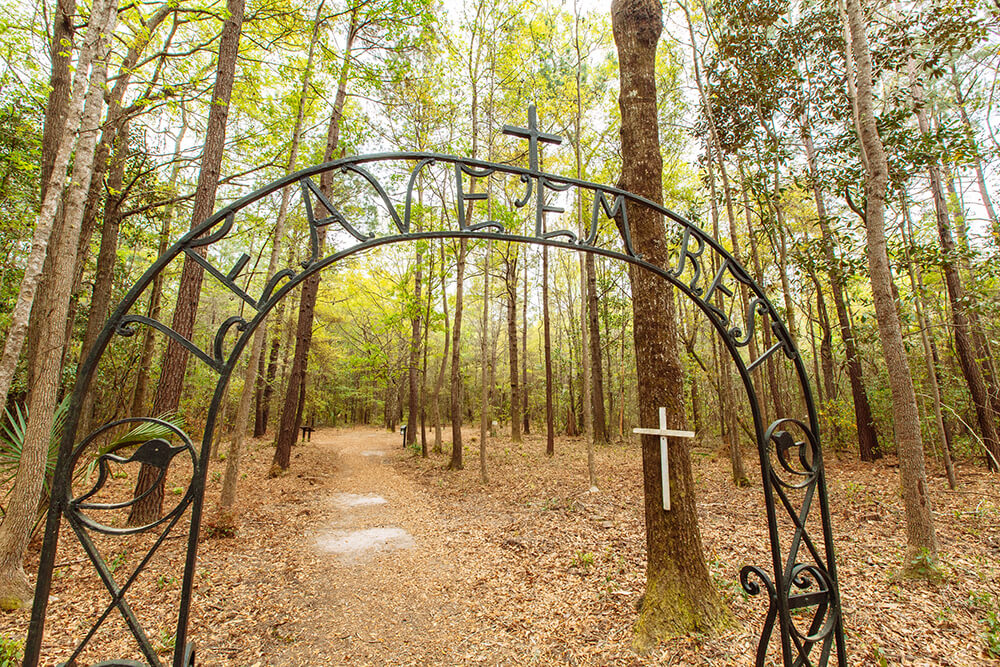
The memorial arch at the 18th-century African American Cemetery; the arch was inspired by Philip Simmons, crafted at his studio and dedicated in 2010. Photo by John Apsey
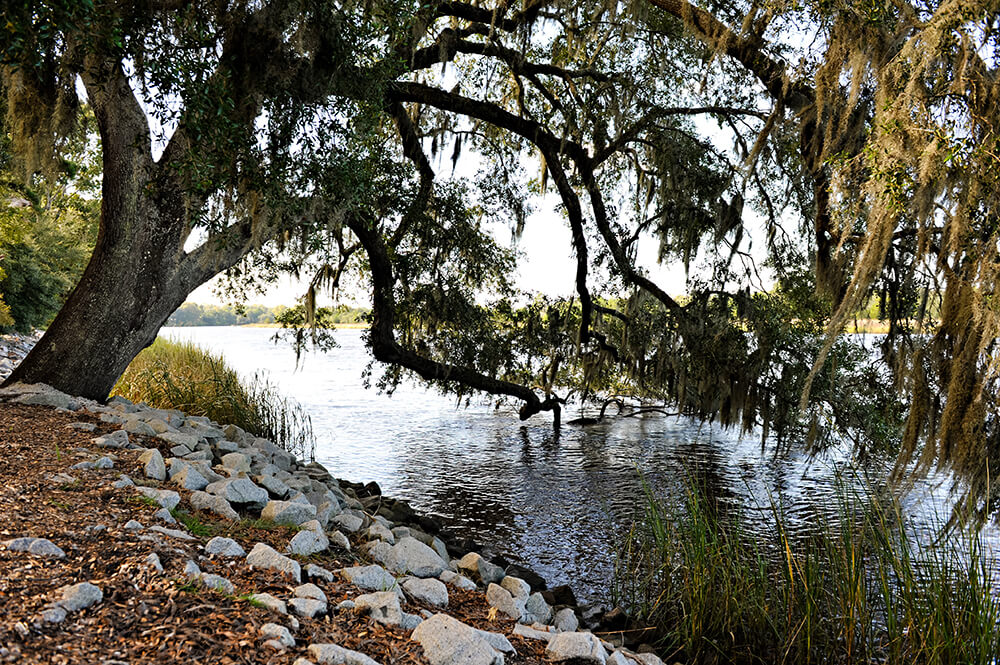
The banks of the Ashley River - photo by Robbin Knight
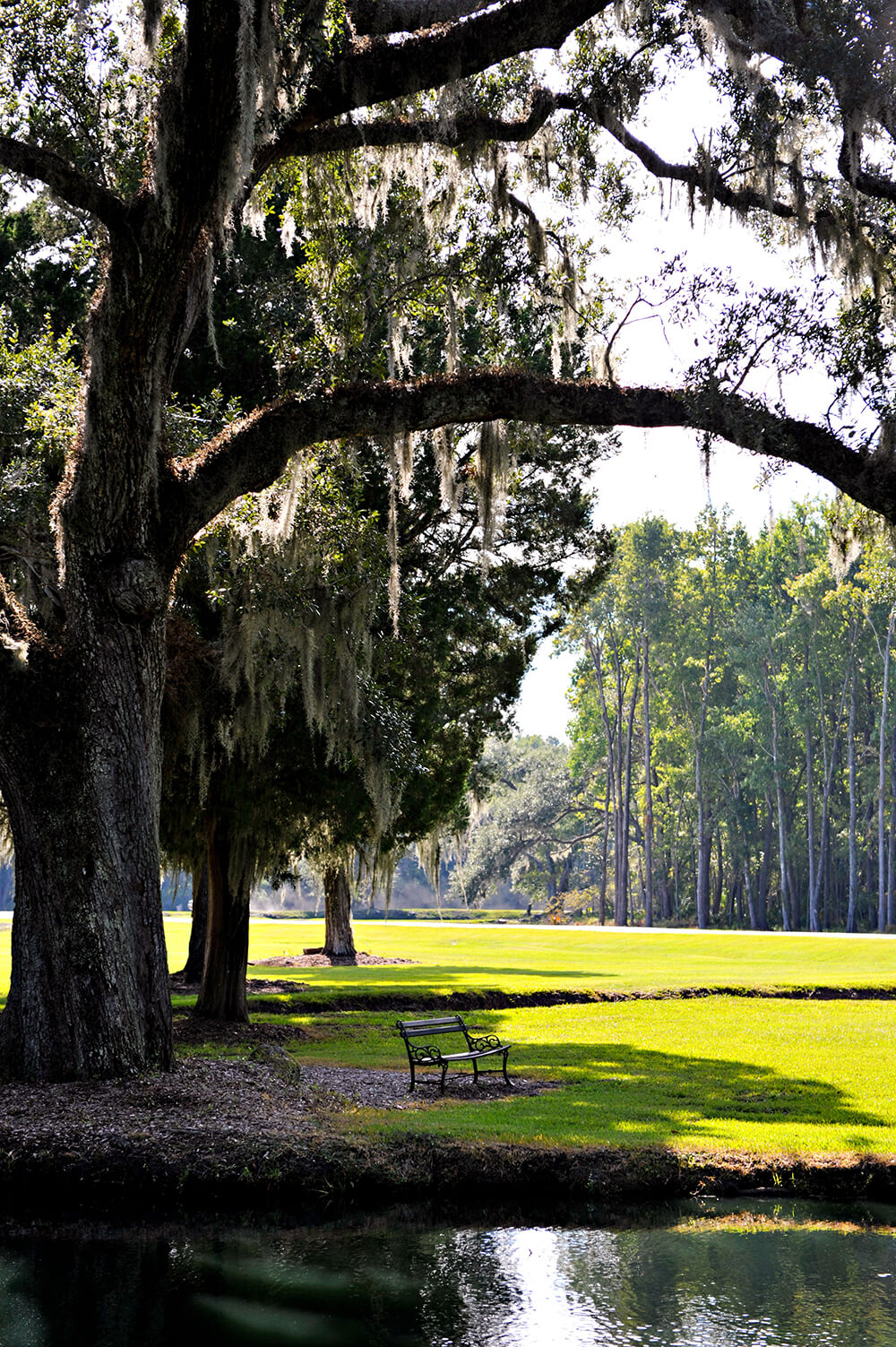
The great lawn with the reflecting pond in the foreground - photo by Robbin Knight
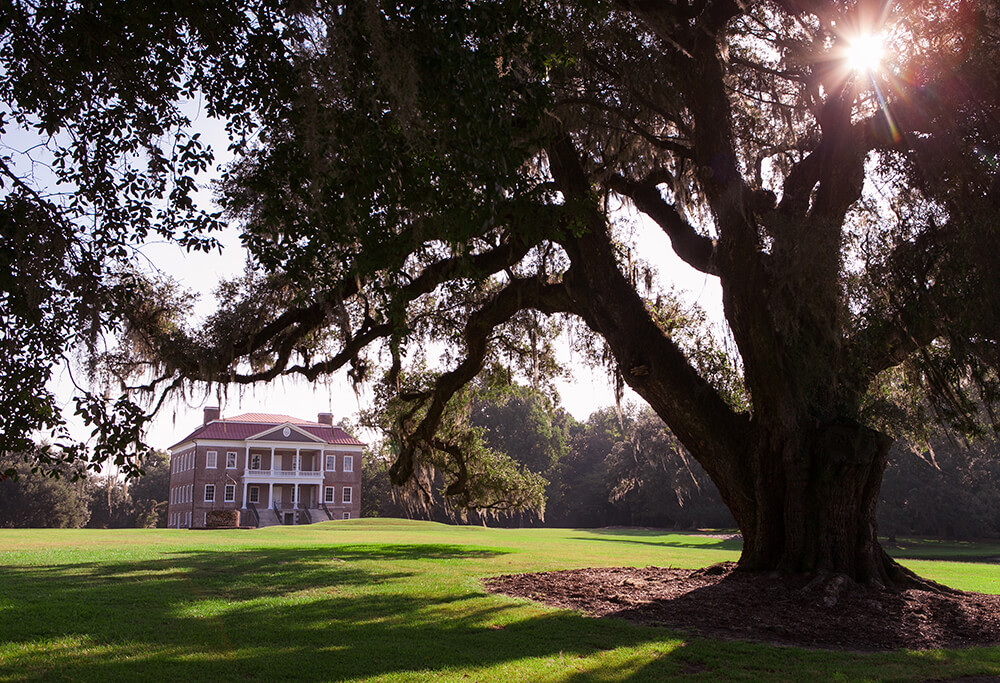
Drayton Hall - photo by Leslie McKellar
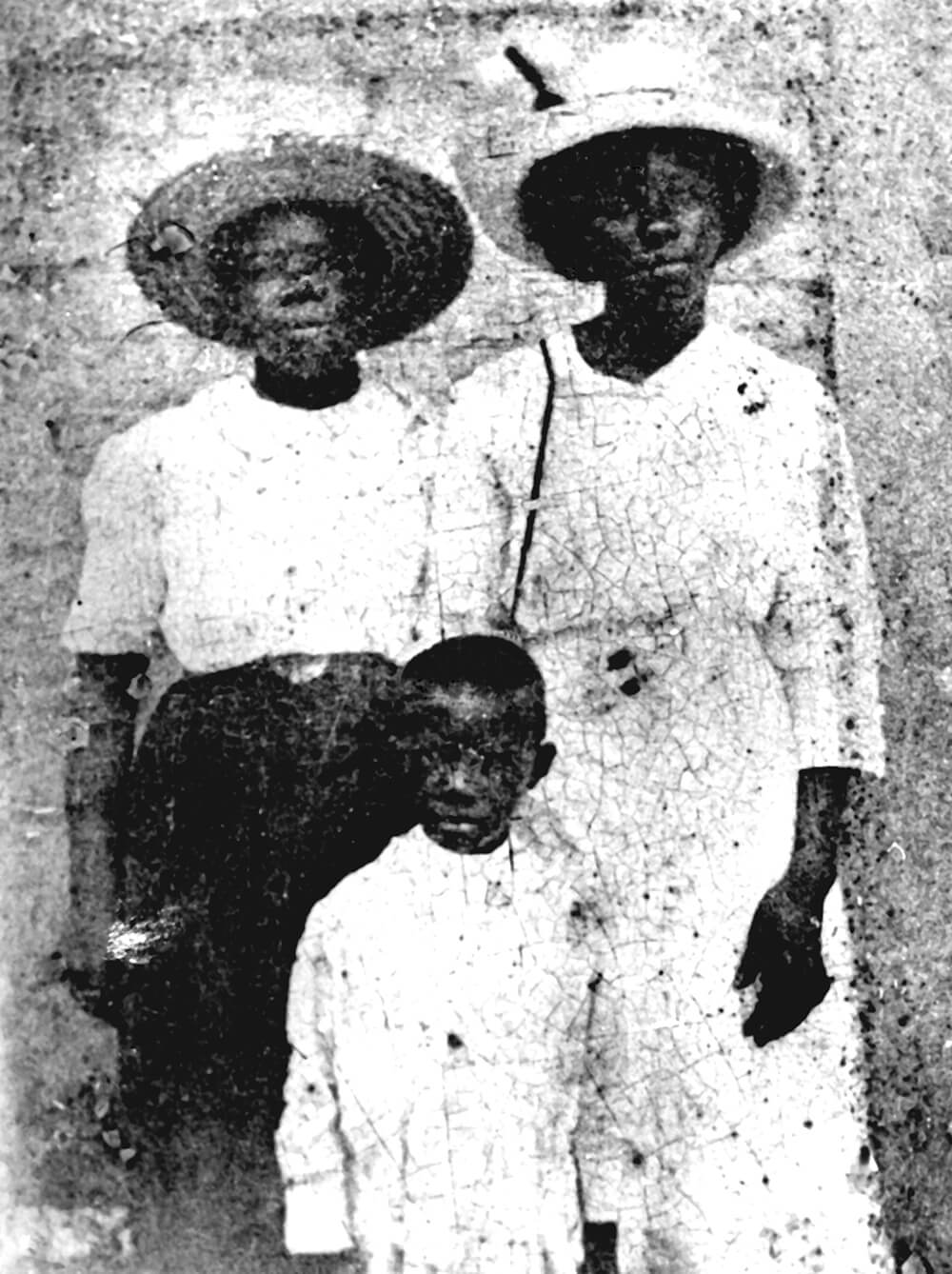
Center: young Richmond Bowens (1908-1998), the seventh-generation descendant of enslaved people who lived and worked at Drayton Hall. He would grow up to become the greatest resource on the site's African American history. Shown with (L-R) his mother, Anna Bryan Bowens, and his aunt, Harriett May.
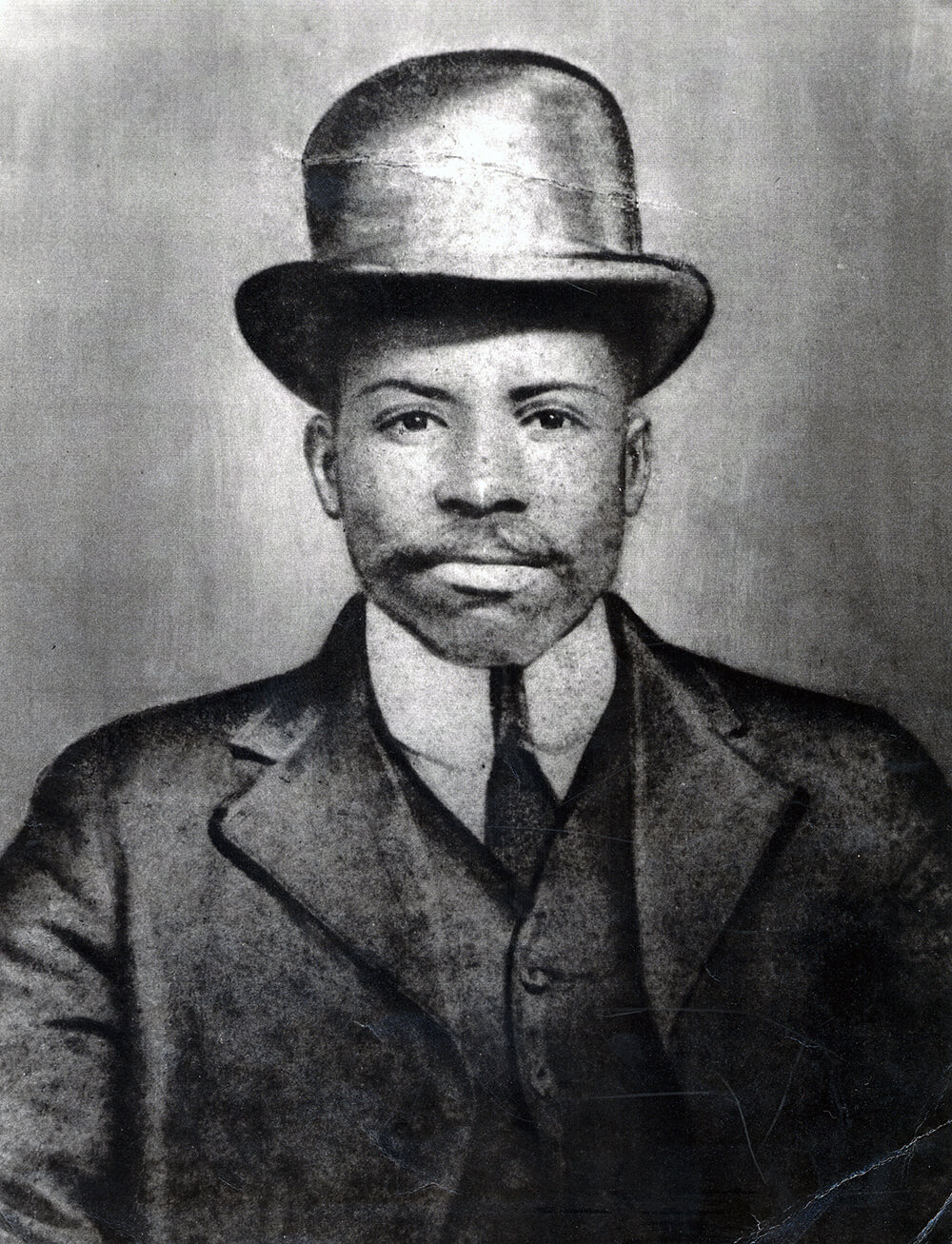
Richmond Hershel Bowens (1880-1920), resided at Drayton Hall and worked for the phosphate mining company in the late 1800s. He married Anna Bryan (1893-1937) and they lived in a house along the entry road. Their son, Richmond Bowens, Jr. (1908-1998), grows up at Drayton Hall.

Charles Henry "Charlie" Drayton (1918- ) With the passing of their Aunt Charlotta in 1969, Charles and his brother Frank inherited her share of the plantation; each already owned a quarter share from their father. After thoughtful consideration of the ever-increasing costs to maintain their ancestral home, Charles and Frank decide to sell the house and 125 acres to the National Trust for Historic Preservation and the remaining acreage to the state of South Carolina, thereby fulfilling their Aunt's wish to preserve the property for future generations.
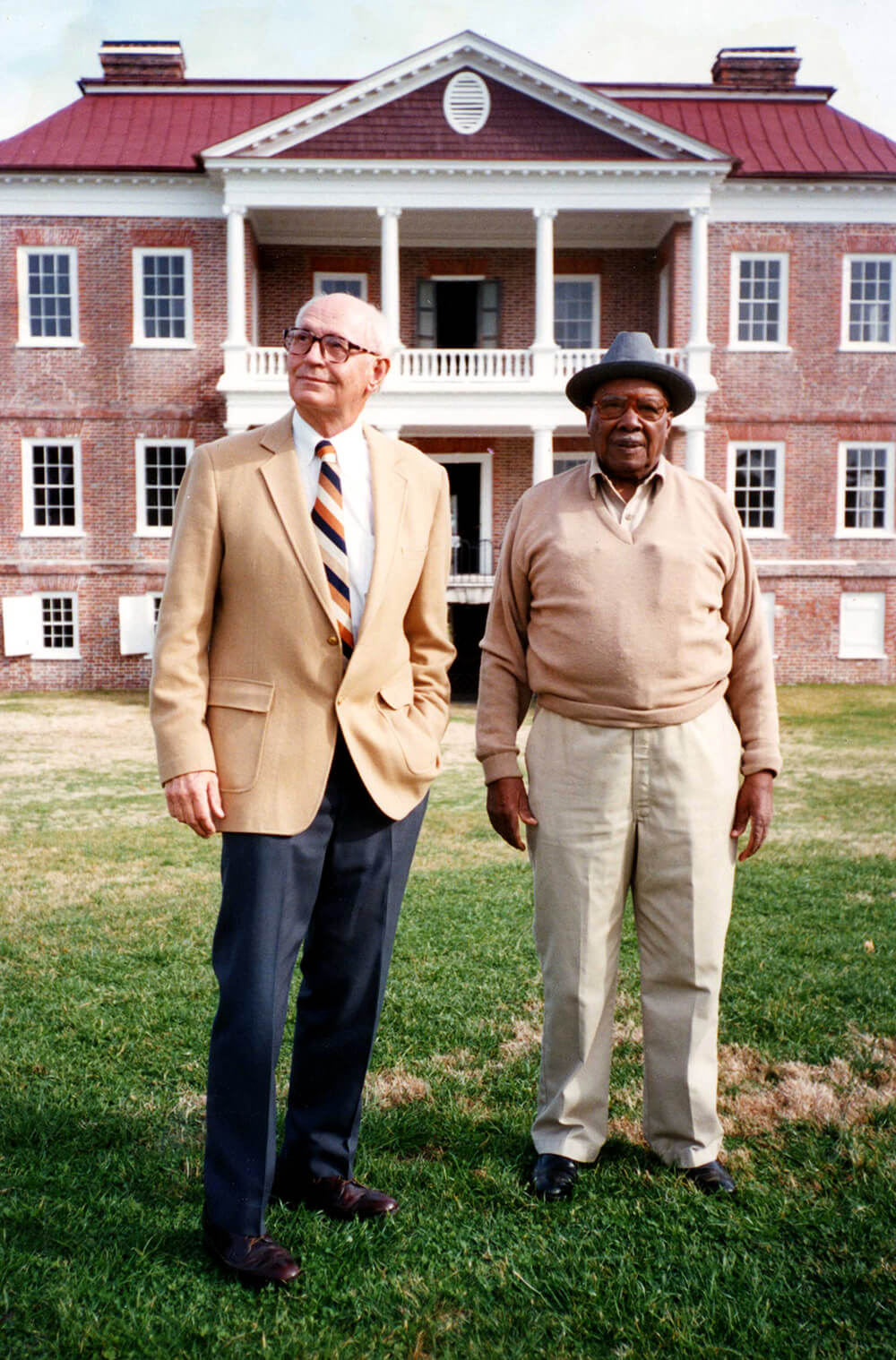
Descendants of the Drayton and Bowens families. L-R: Charles H. "Charlie" Drayton III (1918-) and Richmond Bowens, Jr. (1908-1998)
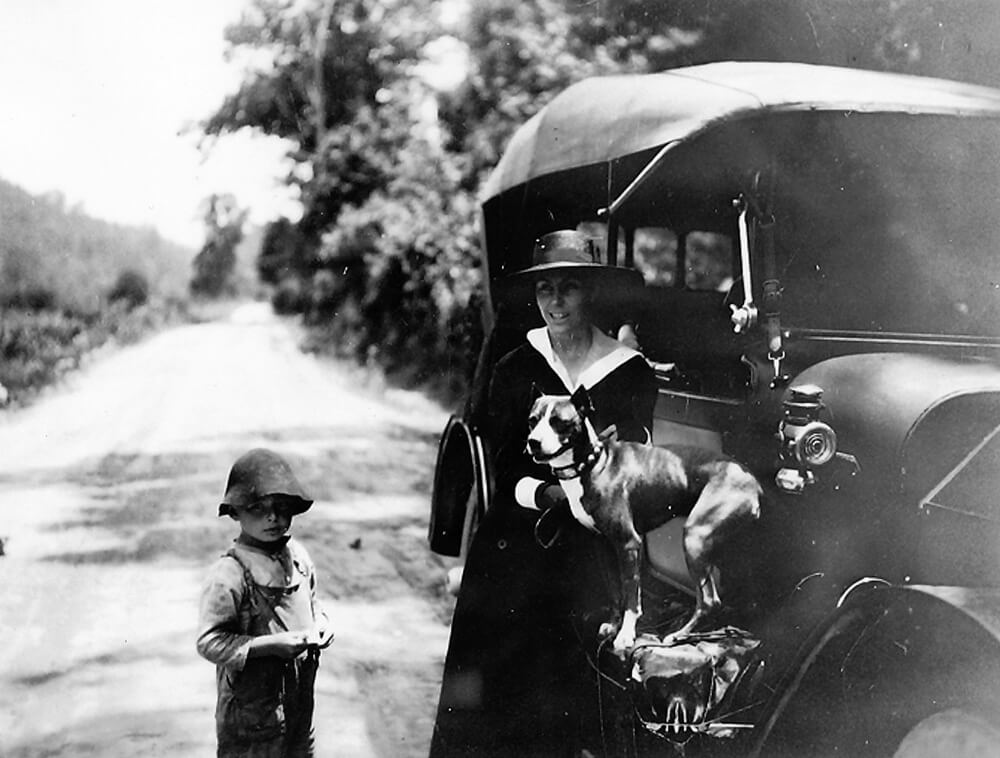
Charlotta Drayton (1884 – 1969) with her beloved dog, Nipper, and an unidentified boy. She was the last member of the Drayton family to spend a significant amount of time at Drayton Hall. An early preservationist, a provision in her will asks that her family not make major changes to Drayton Hall.
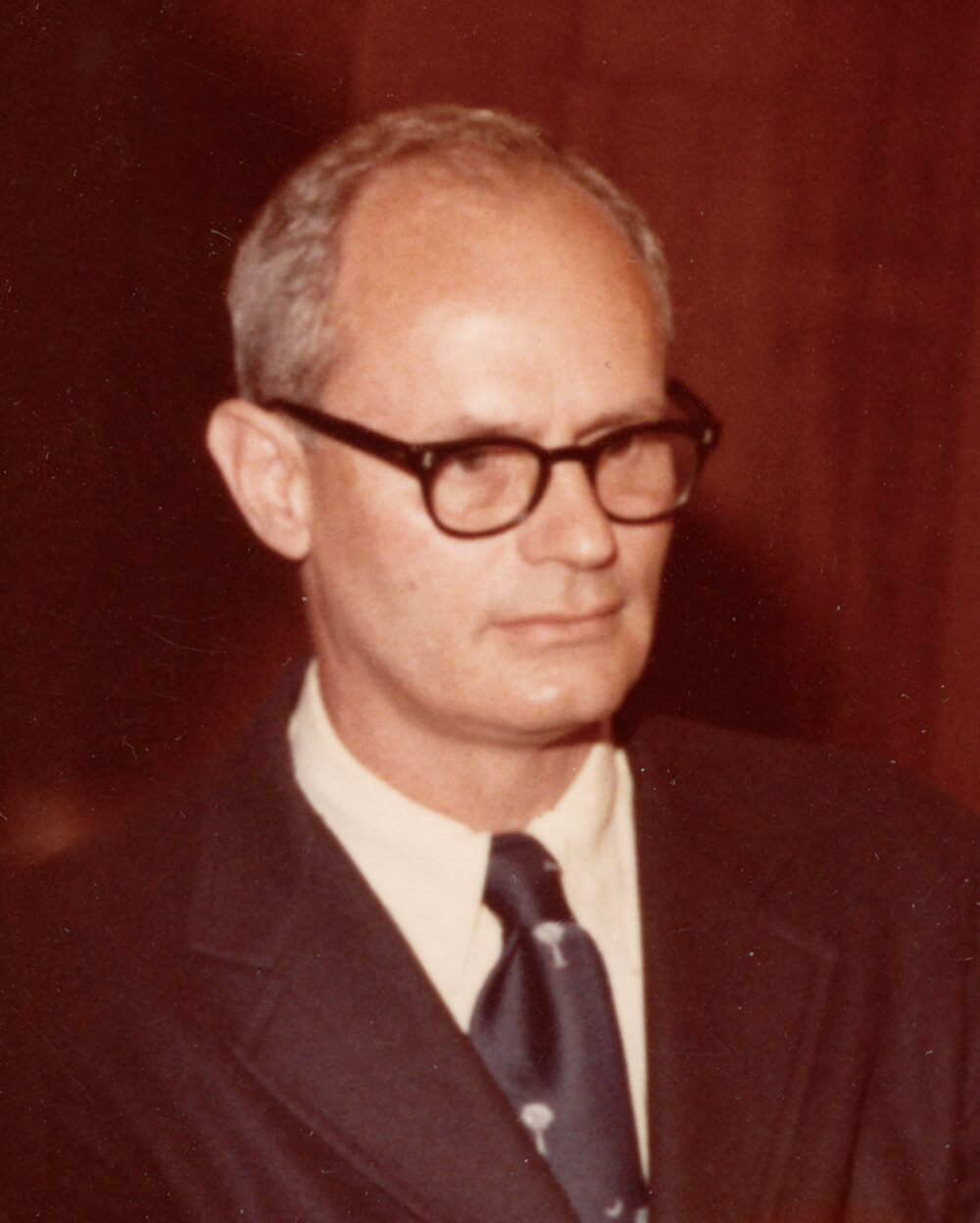
Francis "Frank" Beatty Drayton (1923-1979) With the passing of their Aunt Charlotta in 1969, Frank and his brother Charles inherited her share of the plantation; each already owned a quarter share from their father. After thoughtful consideration of the ever-increasing costs to maintain their ancestral home, Frank and Charles decide to sell the house and 125 acres to the National Trust for Historic Preservation and the remaining acreage to the state of South Carolina, thereby fulfilling their Aunt's wish to preserve the property for future generations.
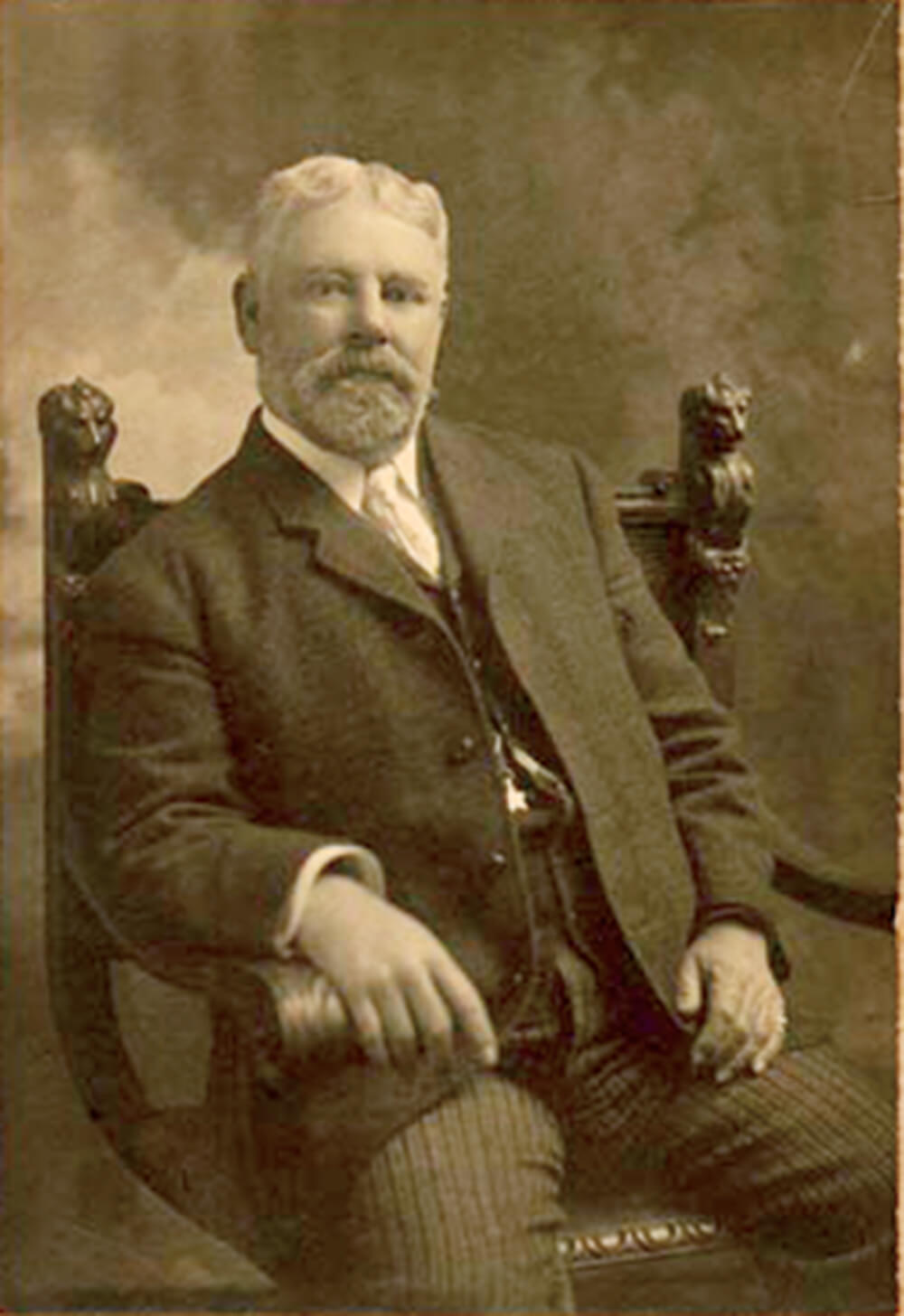
Charles Henry Drayton (1847 – 1915)
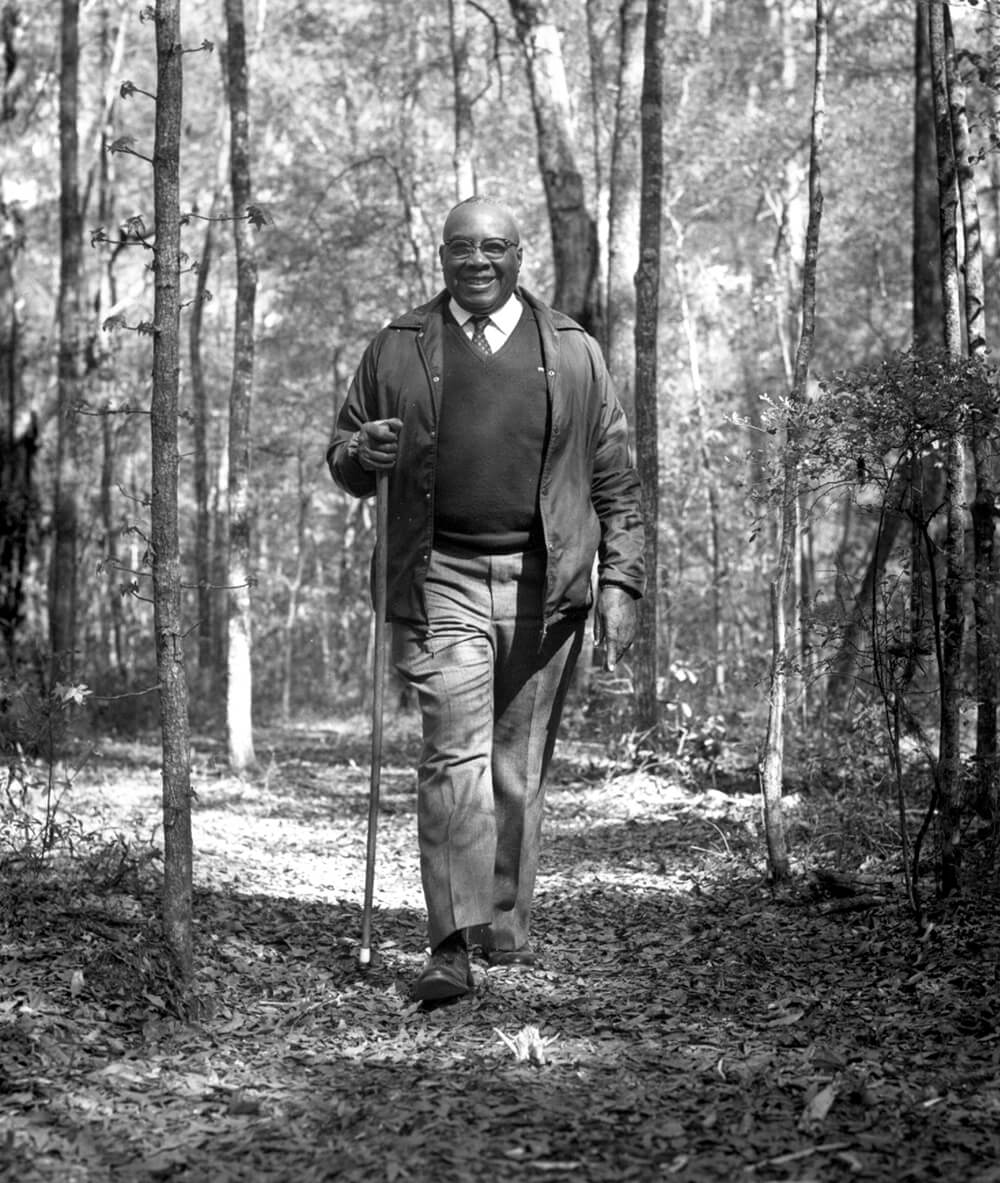
Richmond Bowens, Jr. (1908-1998) The seventh-generation descendant of enslaved people who lived and worked at Drayton Hall, Mr. Bowens was the greatest resource on the site's African American history.
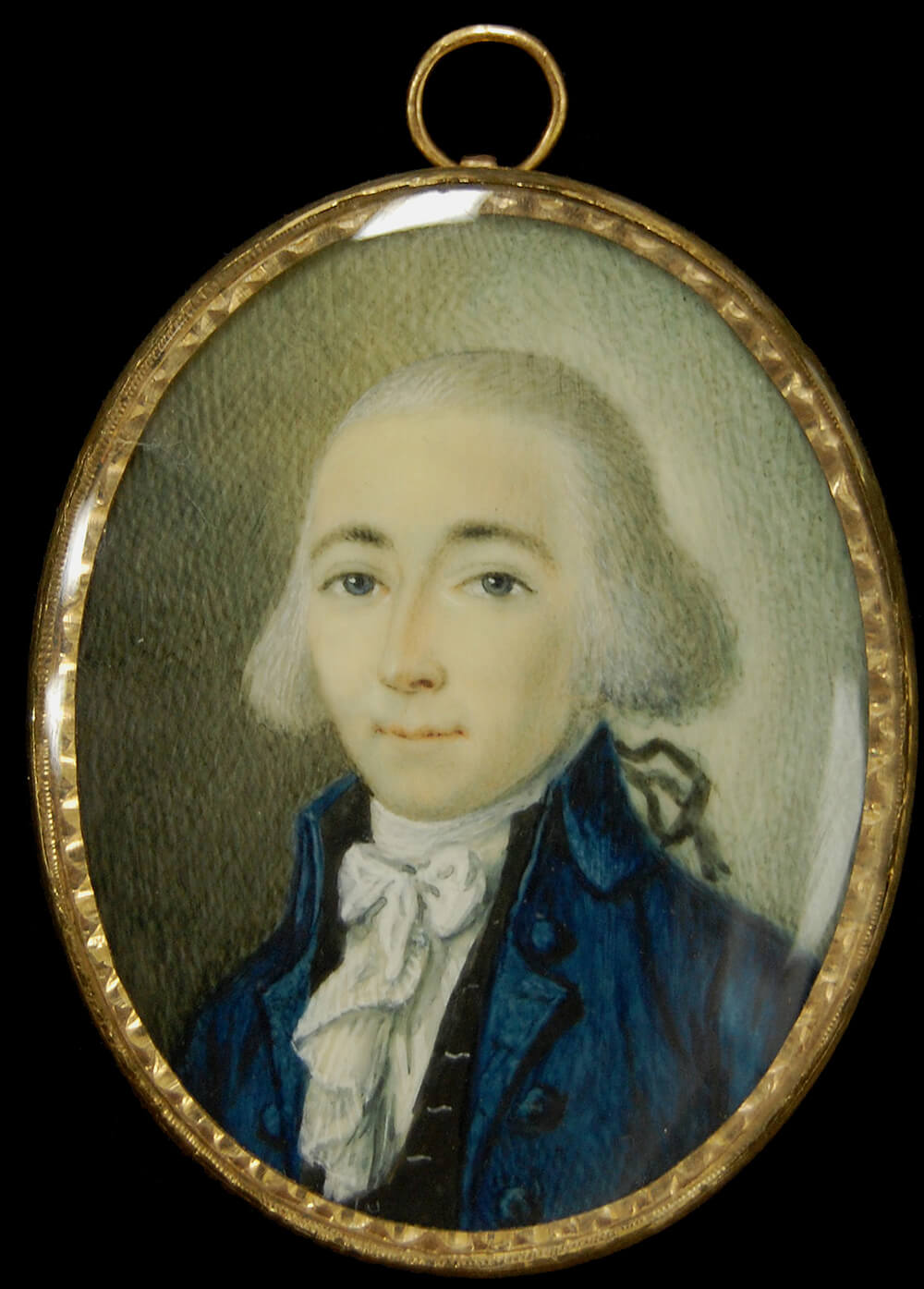
Miniature portrait of charles Drayton (1743 - 1820). Painted c. 1760 when Charles was a young gentleman (artist unkown). Watercolor on ivory, supported by burnished bezel case with hanging loop and mounted brooch pin. Drayton Hall Museum Collection, National Trust for Historic Preservation. Gift of Mr. Charles H. Drayton, III. Photograph courtesy of Mr. Russell Buskirk.
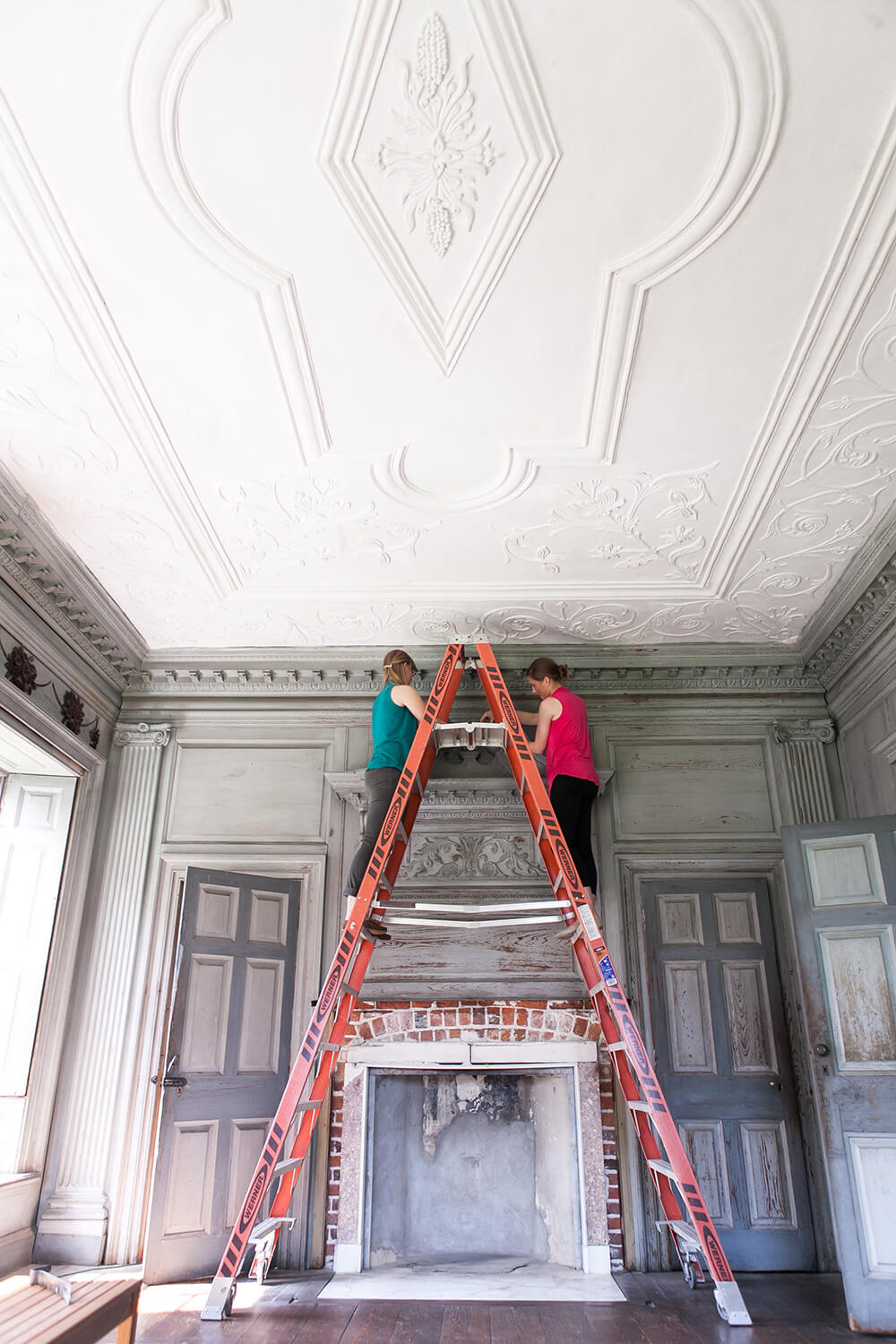
Photo by Leslie McKellar
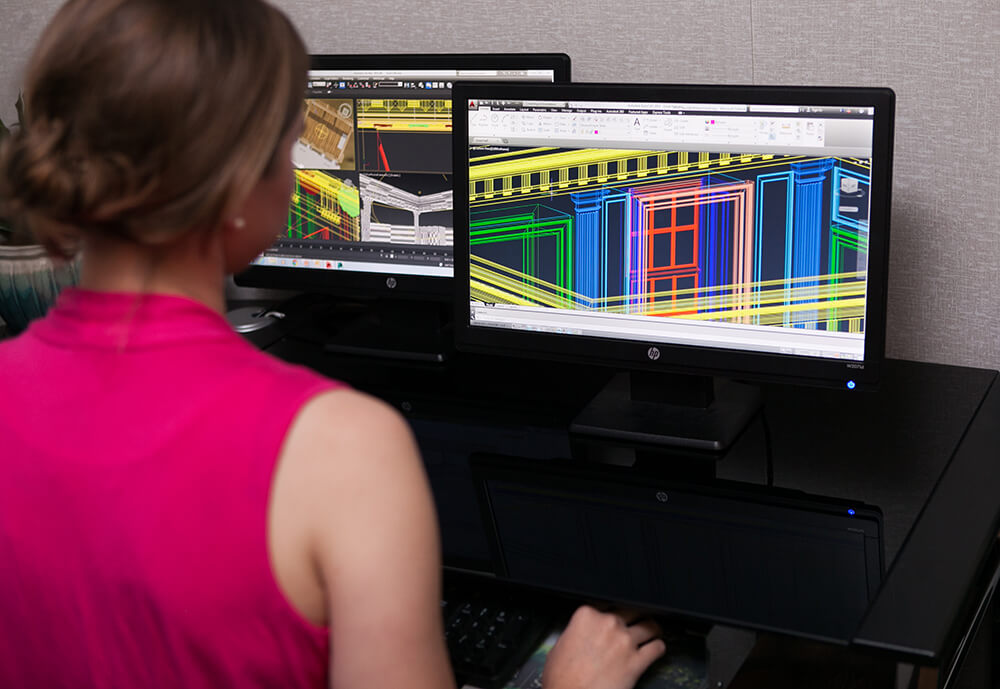
Photo by Leslie McKellar

Photo by Drayton Hall staff.
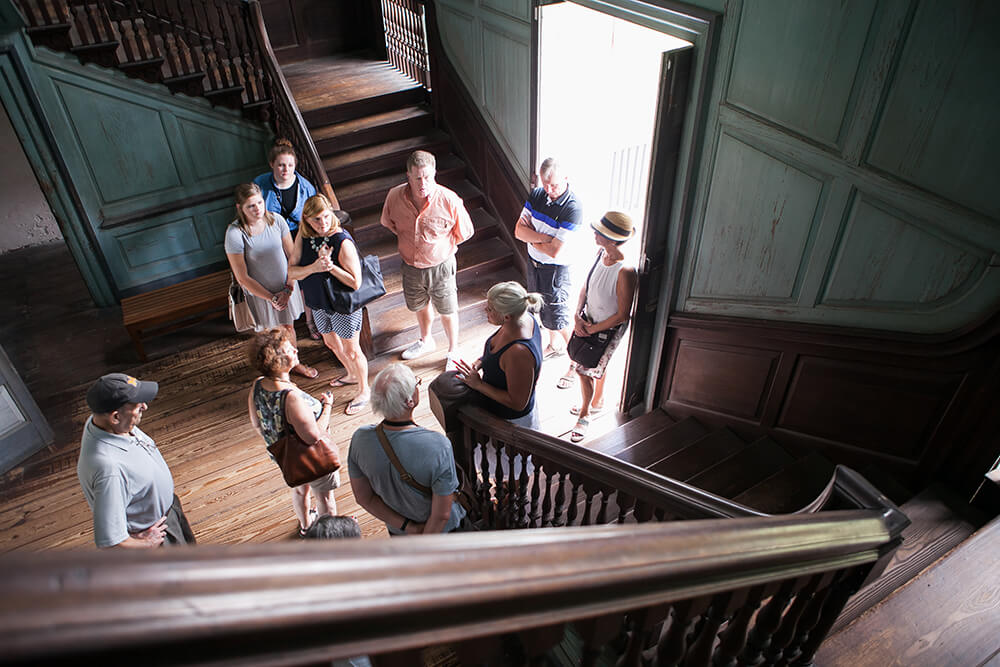
Photo by Leslie McKellar
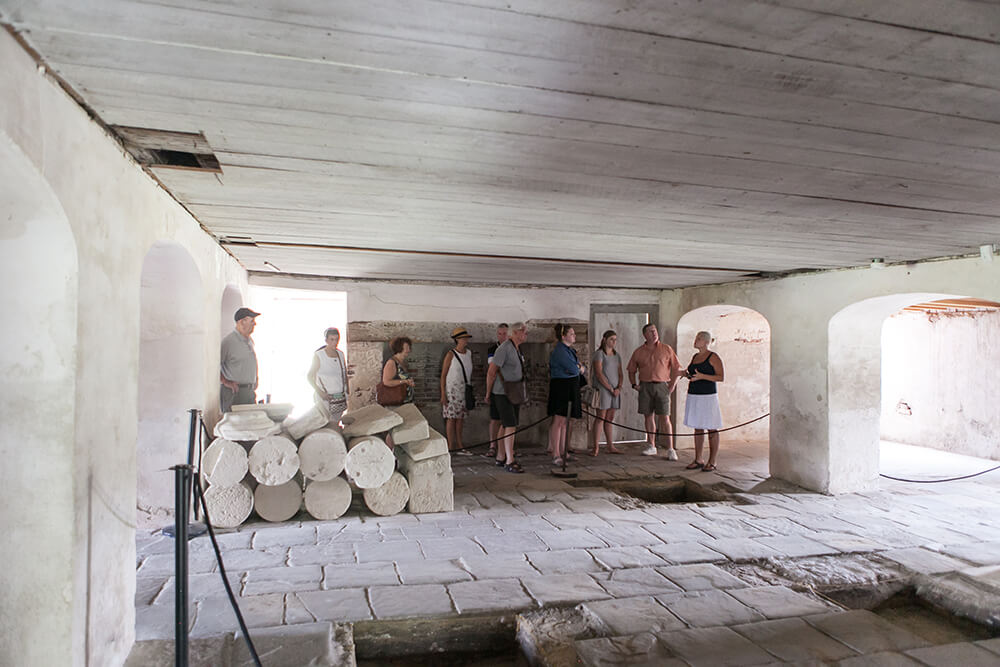
Photo by Leslie McKellar
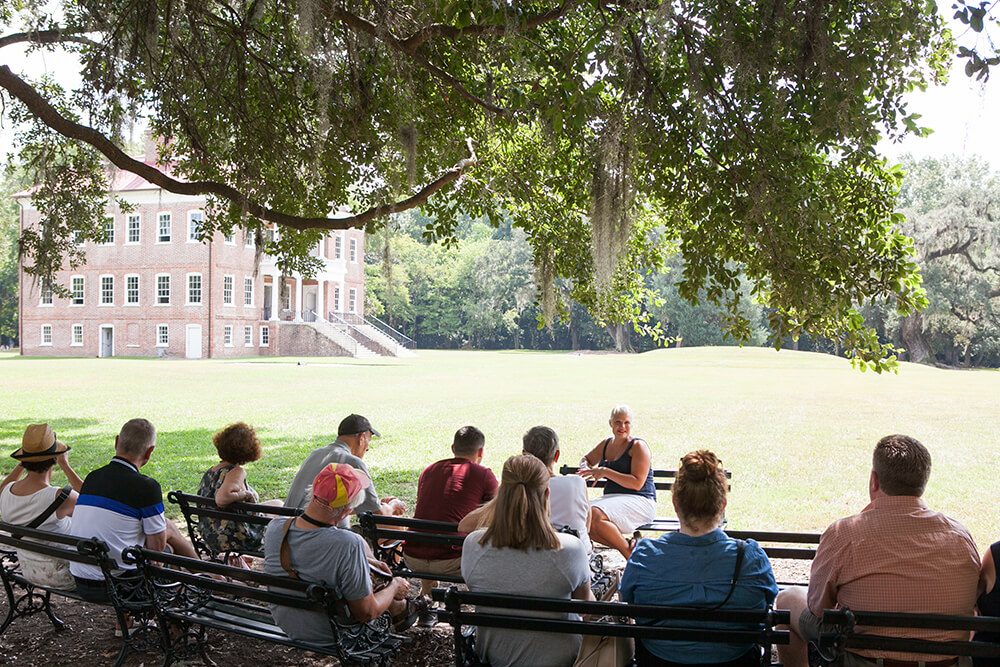
Photo by Leslie McKellar
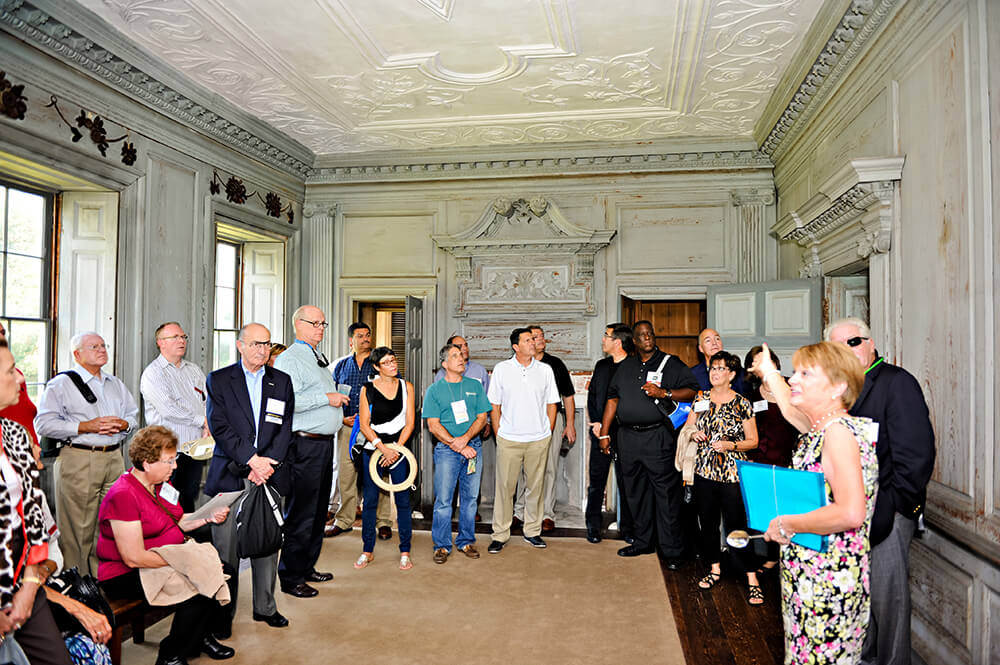
Photo by Robbin Knight
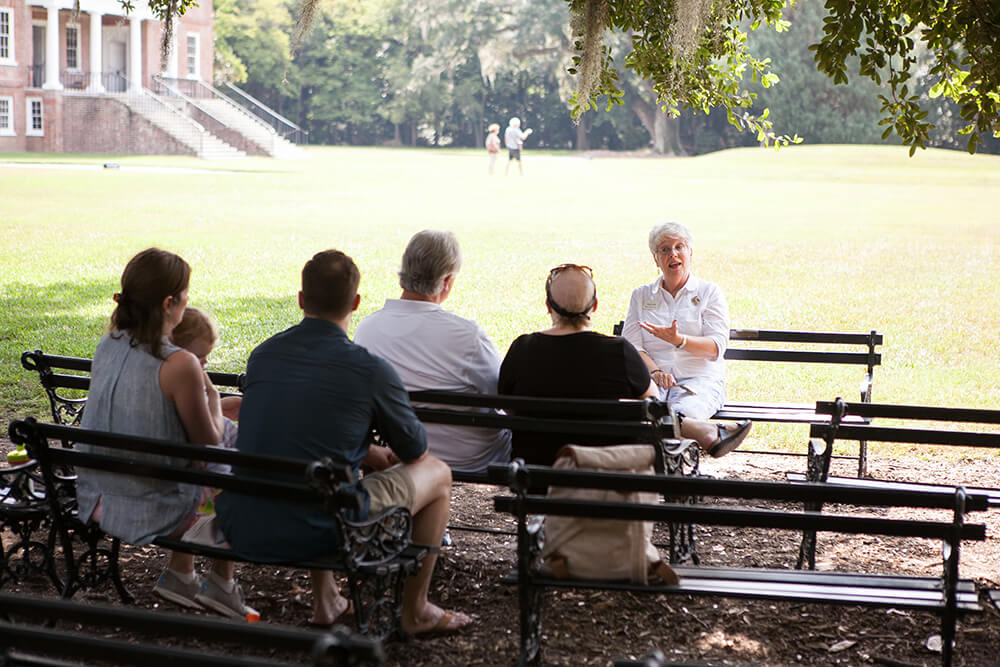
Photo by Leslie McKellar
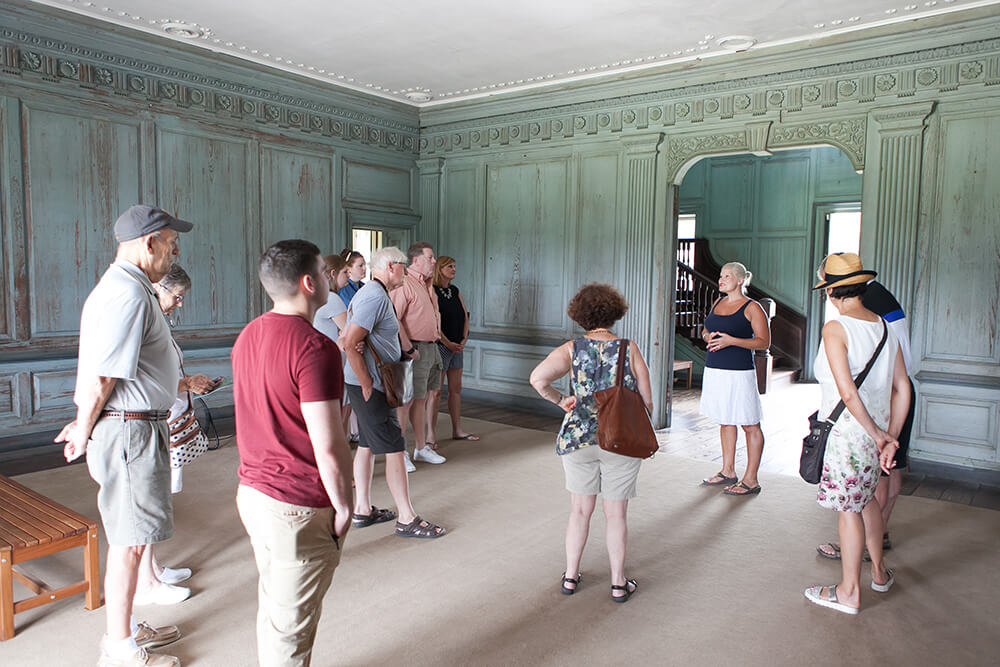
Photo by Leslie McKellar
























